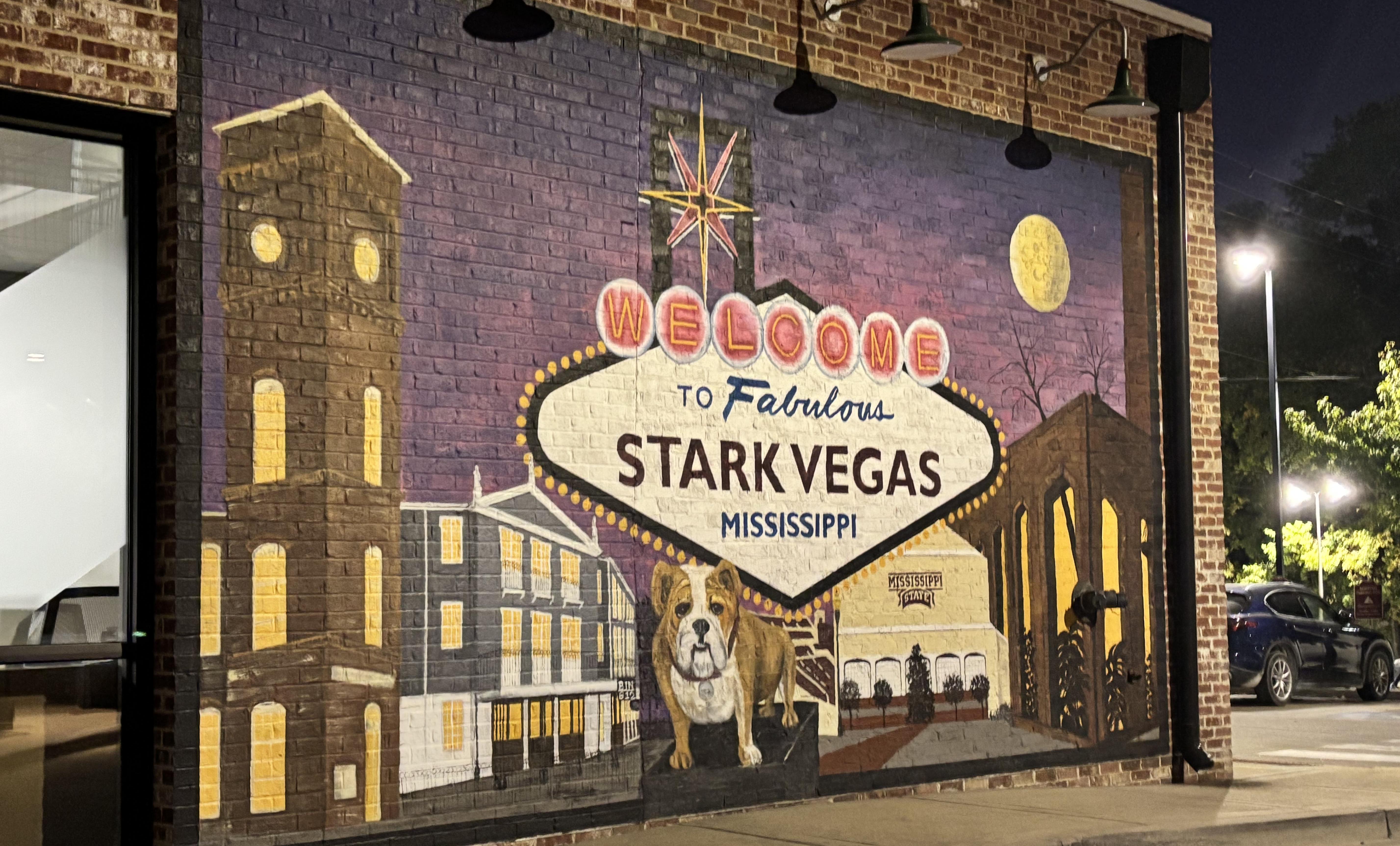30 Unique College Stadiums Around The World Designed Like No Other
The evolution of college stadiums mirrors the growth of higher education and athletics as cornerstones of society. What began as simple fields with wooden bleachers has transformed into bold and imaginative spaces that reflect the ambitions of their creators. These stadiums blend cutting-edge technology with local traditions, creating experiences that resonate far beyond their walls. Whether it’s the roar of a packed crowd, the breathtaking views of natural landscapes, or the quiet moments of reflection during non-event days, these stadiums are integral to the academic and cultural identities of their universities. From the bold colors of Boise State’s “Smurf Turf” to the eco-friendly marvels of TU Delft and Universitas Indonesia, these 30 stadiums prove that sports venues can be as imaginative and meaningful as the events they host.
1. Frank Erwin Center – University of Texas, Austin (USA)
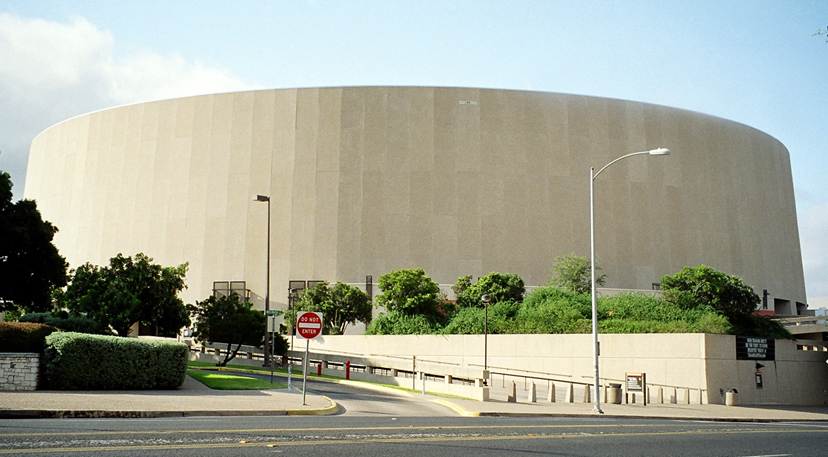
The Frank Erwin Center, affectionately known as the "Superdrum," is a multipurpose arena that has earned its place as a centerpiece of the University of Texas campus. Opened in 1977, this massive dome-shaped structure is as versatile as it is iconic. While it primarily hosts the Texas Longhorns basketball games, the venue is also renowned for its concerts, graduation ceremonies, and community events. Its architecture combines the boldness of Texas spirit with modernist design principles. The dome's sweeping curves and the exposed concrete exterior create an imposing yet harmonious silhouette on the Austin skyline. Inside, the seating is meticulously arranged to maximize sightlines and acoustics, ensuring every fan has an immersive experience. Over the years, the Frank Erwin Center has hosted legendary musical acts, political rallies, and even WWE events, solidifying its reputation as a cultural hub. Sustainability efforts have also made their way into the arena’s management, with energy-efficient lighting and waste-reduction programs enhancing its functionality. Although plans are underway to replace it with a new basketball arena, the Superdrum remains an emblem of Texan pride and ingenuity, representing decades of community engagement and collegiate excellence.
2. The Big House – University of Michigan (USA)
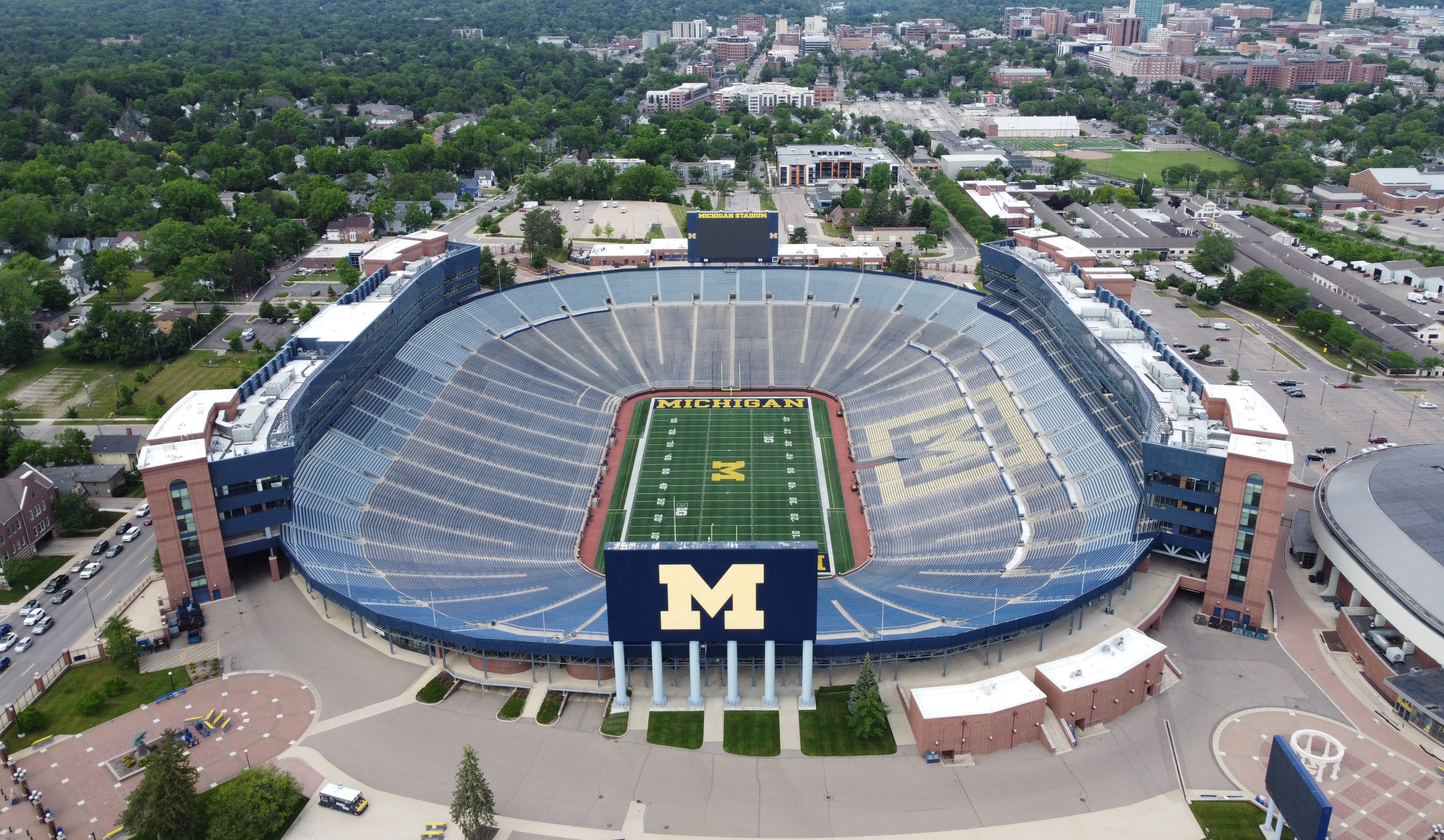
"The Big House" in Ann Arbor is a true behemoth in the world of college stadiums, with a seating capacity exceeding 107,000. Officially known as Michigan Stadium, it is not only the largest stadium in the United States but also one of the most iconic. Built in 1927, this venue has undergone numerous expansions and renovations, each time elevating its status as a marvel of engineering and design. What sets the Big House apart is its ability to feel intimate despite its immense size. The stadium's innovative bowl design ensures that fans are close to the action, fostering an electric atmosphere during games. The field itself is a masterpiece of maintenance, with its natural grass surface meticulously cared for to provide optimal playing conditions. Beyond football, the stadium serves as a cultural landmark, hosting everything from commencement ceremonies to NHL Winter Classic games. Its "Go Blue" spirit is palpable, with the stadium often filled to capacity, creating a sea of maize and blue. The Big House is also known for its sustainability efforts, including a zero-waste initiative that aligns with the university's broader environmental goals. For Michigan fans and visitors alike, the Big House is more than just a stadium—it's a shrine to excellence and tradition.
3. La Bombonera – University of Buenos Aires (Argentina)
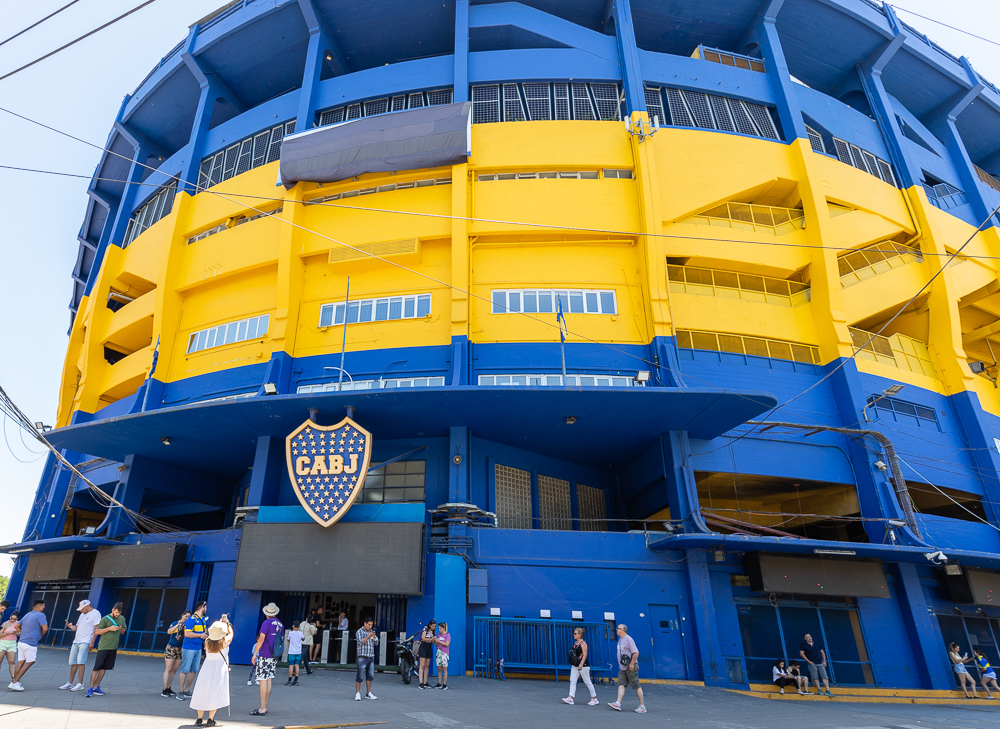
Modeled after the legendary La Bombonera stadium in Boca Juniors, this college venue offers a similar level of passion and architectural intrigue, albeit on a smaller scale. Located in Buenos Aires, La Bombonera is renowned for its steep stands and vibrant colors, which create an intense, almost theatrical atmosphere during matches. The stadium's design is a triumph of spatial efficiency. With limited land to work with, architects employed a compact layout that amplifies crowd noise, giving the venue a reputation as one of the loudest in collegiate sports. The asymmetrical shape and vibrant blue-and-yellow color scheme add to its unique charm, making it a standout even among professional venues. More than just a sports arena, La Bombonera serves as a cultural hub for the University of Buenos Aires. It hosts a variety of events, from student festivals to local football tournaments, reflecting the city’s deep love for the sport. The stadium’s impact extends beyond the university, fostering a sense of pride and community in the surrounding neighborhoods.
4. Stade Sébastien Charléty – Paris Cité University (France)
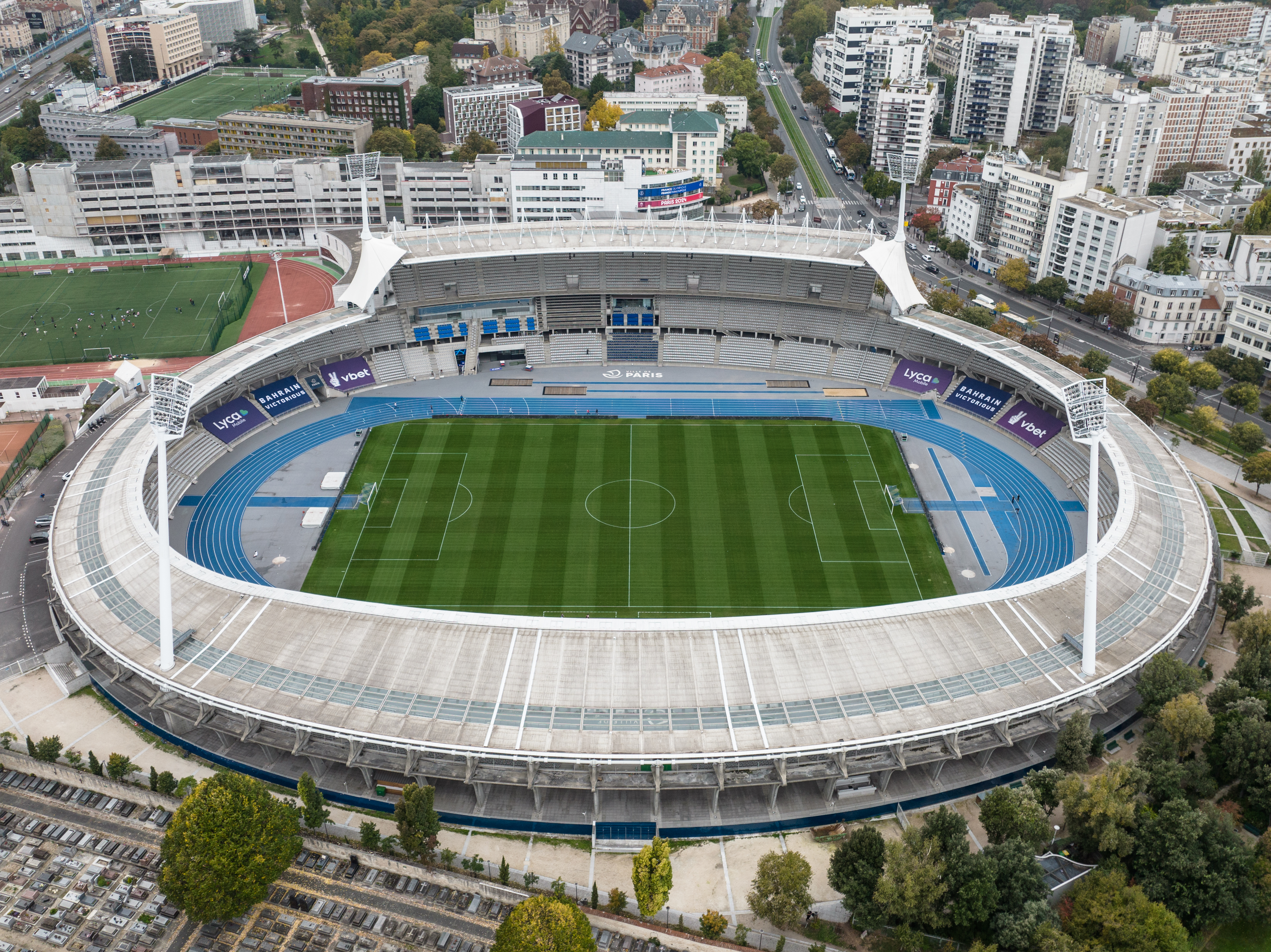
Situated in the heart of Paris, Stade Charléty is a masterclass in minimalist design and architectural sophistication. Originally built in 1939 and revamped in the late 1990s, this stadium exemplifies how form and function can coexist seamlessly. Its open-air design is both elegant and practical, allowing natural light to flood the venue while providing unobstructed views of the field from every seat. One of its defining features is its retractable roof, a nod to modern engineering that allows the stadium to host events in various weather conditions. The roof’s lightweight design and clean lines give the stadium a sleek, futuristic appearance. Charléty’s role extends beyond athletics; it serves as a venue for cultural events, academic ceremonies, and even political gatherings, reflecting its central role in Parisian life. The stadium’s location within Paris Cité University reinforces its connection to academia. Students often use the facility for recreational sports and training, making it a vital part of campus life. Its accessibility via public transportation and eco-friendly operations further solidify its reputation as a forward-thinking venue that bridges tradition with innovation.
5. Tokyo Dome – University of Tokyo (Japan)
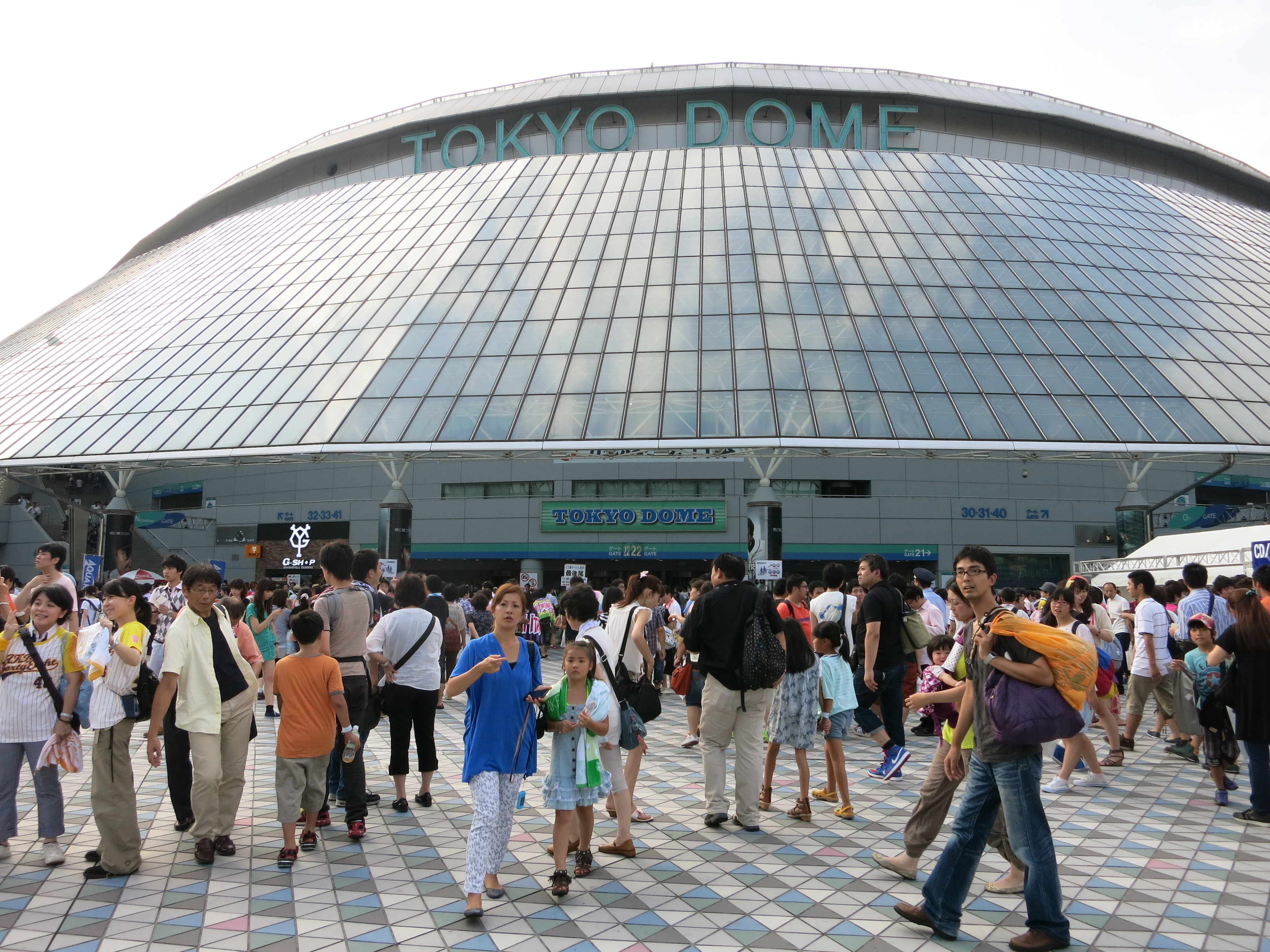
The Tokyo Dome, affectionately known as "The Big Egg," is a marvel of Japanese engineering and design. With its futuristic dome shape and advanced infrastructure, the stadium serves as both a sports hub and an iconic architectural landmark. While primarily a professional baseball stadium, it also hosts events for the University of Tokyo, symbolizing the institution’s commitment to excellence in sports and culture. The Dome's unique air-supported roof is a technological wonder, designed to withstand earthquakes and harsh weather conditions, reflecting Japan’s emphasis on resilience and safety. Inside, the venue boasts cutting-edge facilities, including a fully retractable seating system that accommodates various configurations for baseball games, concerts, and academic events. Beyond its structural feats, the Tokyo Dome is a cultural epicenter. It’s surrounded by an entertainment complex featuring restaurants, museums, and even an amusement park, making it a favorite destination for students and tourists alike. Its integration of technology and tradition embodies the spirit of modern Japan, offering an unparalleled experience for visitors.
6. Beaver Stadium – Penn State University (USA)
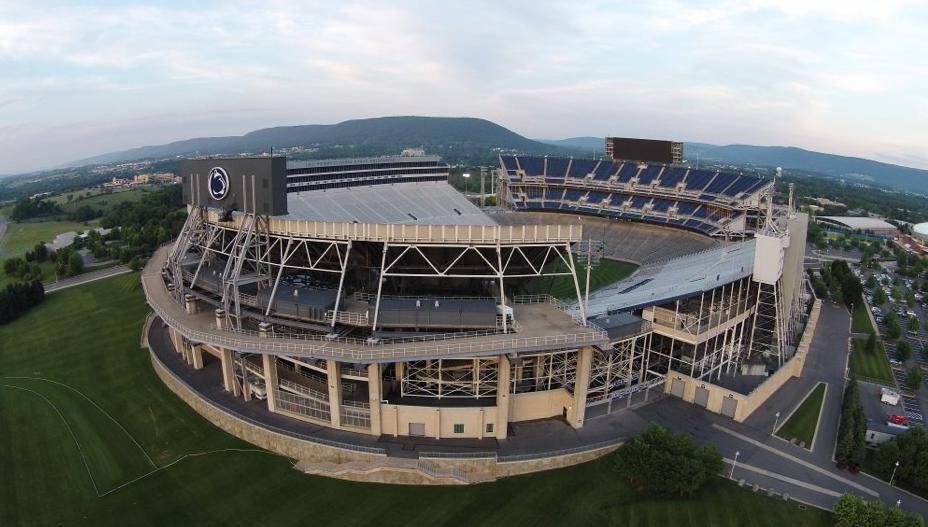
Beaver Stadium in University Park, Pennsylvania, is synonymous with collegiate football greatness. With a capacity of over 106,000, it ranks as one of the largest and most iconic stadiums in the world. Its imposing structure and roaring crowds make it a fortress for the Penn State Nittany Lions, but its appeal goes far beyond game days. The stadium’s design focuses on creating an intense, unified atmosphere. Its tiered seating and compact design ensure that fans are close to the action, amplifying the energy and making it one of the loudest venues in college sports. The famed "White Out" games, where fans dress in white to create a striking visual spectacle, have become a defining feature of Beaver Stadium’s legacy. Off the field, the stadium plays a crucial role in Penn State’s community life. It hosts charity events, cultural festivals, and graduation ceremonies, showcasing its versatility and importance to the university. Recent renovations have added state-of-the-art facilities, including high-definition video boards and energy-efficient systems, ensuring the stadium remains a cutting-edge venue while honoring its rich history.
7. Matmut Atlantique – University of Bordeaux (France)

The Matmut Atlantique, located in Bordeaux, is a prime example of architectural minimalism and modern elegance. Completed in 2015, this stadium serves not only as a venue for professional sports but also as a home for university-level competitions and cultural events. Its design, characterized by a series of slender white columns that rise like a forest around the structure, creates a striking visual impact while supporting its expansive roof. Inside, the stadium offers seating for over 42,000 spectators, arranged in a way that ensures excellent sightlines from every angle. The roof, with its lightweight and translucent materials, enhances the natural light that filters into the arena, creating a welcoming atmosphere. The venue’s acoustics are carefully engineered, amplifying crowd noise to create an engaging experience for both players and fans. The Matmut Atlantique also reflects Bordeaux’s commitment to sustainability. The stadium incorporates rainwater harvesting systems, solar panels, and energy-efficient lighting, minimizing its environmental footprint. As part of the broader urban landscape, the stadium connects seamlessly with public transport, reinforcing its role as a community hub. For the University of Bordeaux, it stands as a symbol of innovation, uniting academics, athletes, and the local population in a shared space.
8. Memorial Stadium – University of Nebraska (USA)
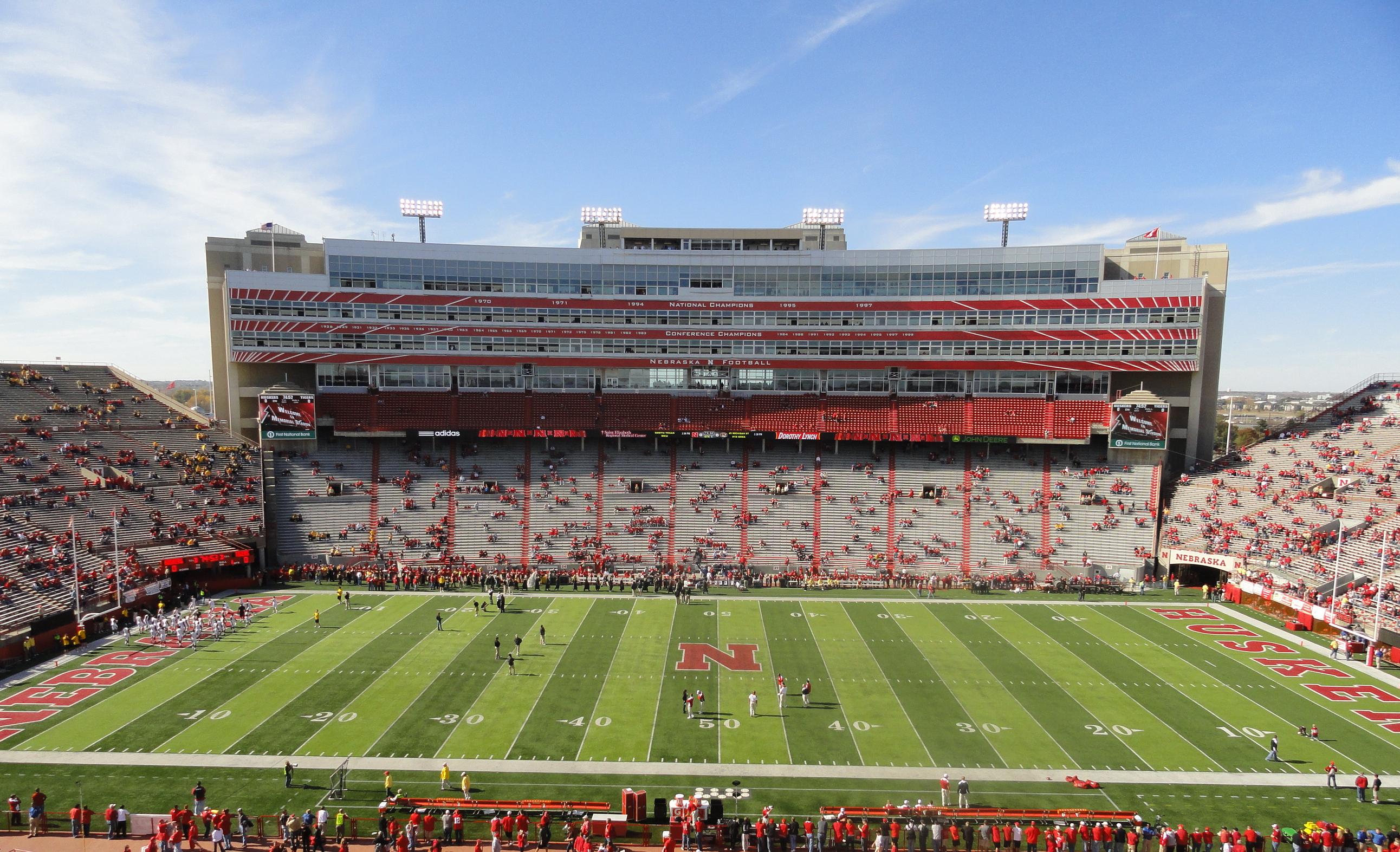
Memorial Stadium in Lincoln, Nebraska, holds a special place in the hearts of Cornhusker fans. Opened in 1923, this red-brick colossus blends historical significance with modern advancements, embodying the values of hard work and resilience. Its towering exterior and classic collegiate architecture make it one of the most visually striking venues in American college sports. The stadium has a seating capacity of over 85,000 and is known for its incredible game-day atmosphere. Fans pack the stands clad in red, earning the stadium its nickname, "The Sea of Red." The sound of the crowd is deafening, providing an unmistakable home-field advantage. The venue’s FieldTurf playing surface and cutting-edge video boards ensure a top-notch experience for players and spectators alike. Beyond football, Memorial Stadium plays an integral role in the university community. It serves as a venue for commencement ceremonies, concerts, and charity events, fostering a sense of unity and pride among students, alumni, and local residents. The stadium’s ongoing renovations have enhanced accessibility and sustainability, including the use of LED lighting and efficient waste management systems. Memorial Stadium is more than a sports venue—it’s a living testament to the spirit of Nebraska.
9. Olympic Stadium – University of Rome Tor Vergata (Italy)
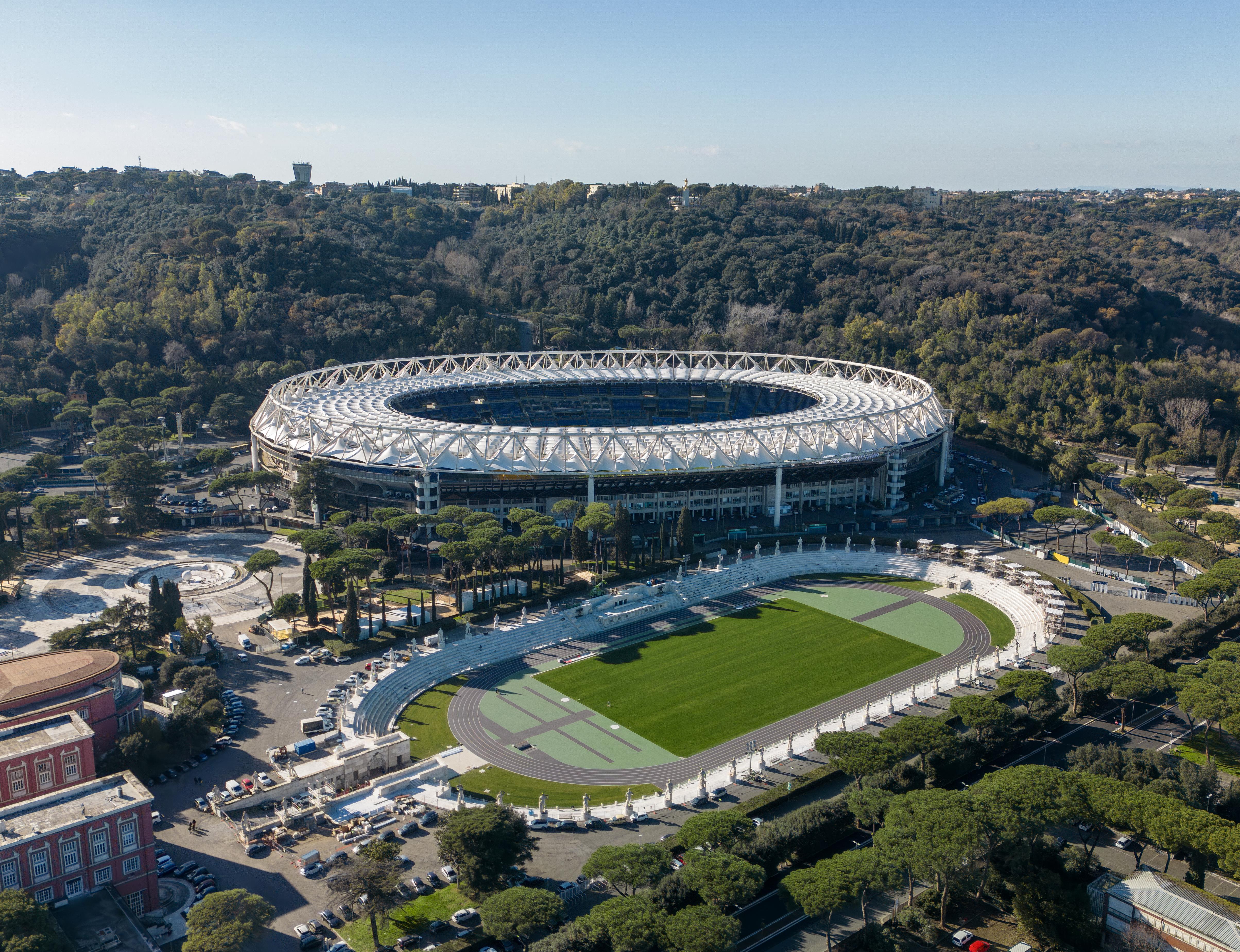
The Olympic Stadium in Rome, originally built for the 1960 Summer Olympics, has since evolved into a cornerstone of Italian collegiate and professional sports. Its location within the University of Rome Tor Vergata connects it to the academic community, allowing students to experience world-class facilities for both study and play. This stadium’s design is a seamless blend of classical inspiration and modern engineering. Its marble-clad seating areas and statues evoke the grandeur of ancient Roman arenas, while the expansive roof and advanced lighting systems reflect contemporary architectural practices. With a capacity of 70,000, the stadium hosts football matches, track and field events, and large-scale concerts. The Olympic Stadium’s cultural significance extends beyond sports. It has served as a venue for papal masses, international conferences, and art exhibitions, cementing its status as a multifunctional space. Its historical roots and continued relevance make it a beacon of excellence for the University of Rome and a symbol of Italy’s rich heritage.
10. Autzen Stadium – University of Oregon (USA)
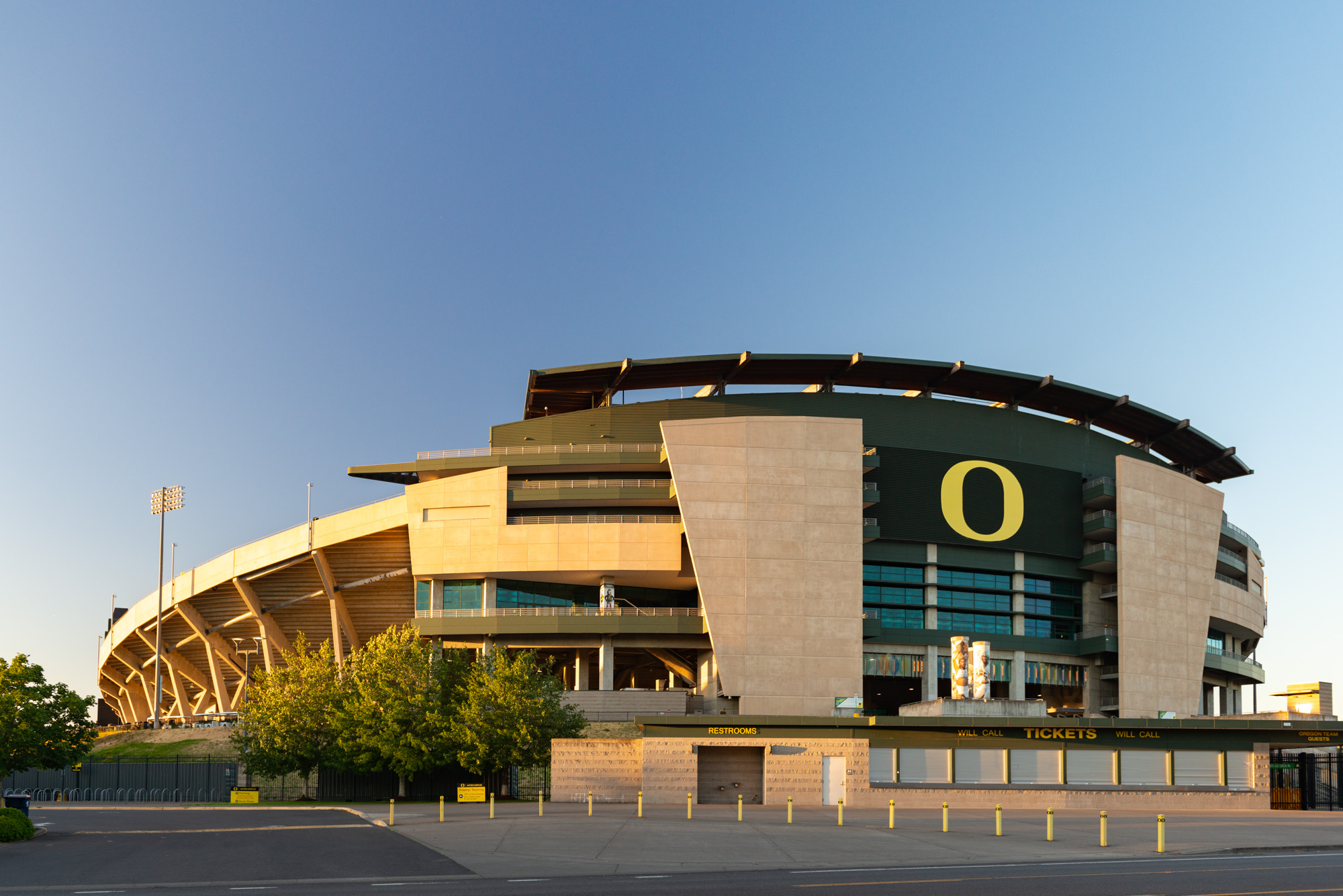
Autzen Stadium in Eugene, Oregon, is often referred to as one of the loudest stadiums in college football, despite its comparatively modest seating capacity of around 54,000. This reputation stems from its unique design, which captures and amplifies the energy of its fans, creating an intimidating environment for opposing teams. The stadium’s eco-friendly initiatives set it apart from its peers. Solar panels line the exterior, while rainwater harvesting systems help maintain the field’s pristine condition. Inside, the facility boasts energy-efficient lighting and a commitment to zero-waste operations, aligning with the University of Oregon’s environmental goals. Autzen’s design combines modern aesthetics with the natural beauty of the Pacific Northwest. The stadium’s open ends provide breathtaking views of the surrounding forests and mountains, enhancing the game-day experience. For the university community, Autzen Stadium represents innovation, sustainability, and a relentless dedication to excellence on and off the field.
11. FNB Stadium – University of Johannesburg (South Africa)
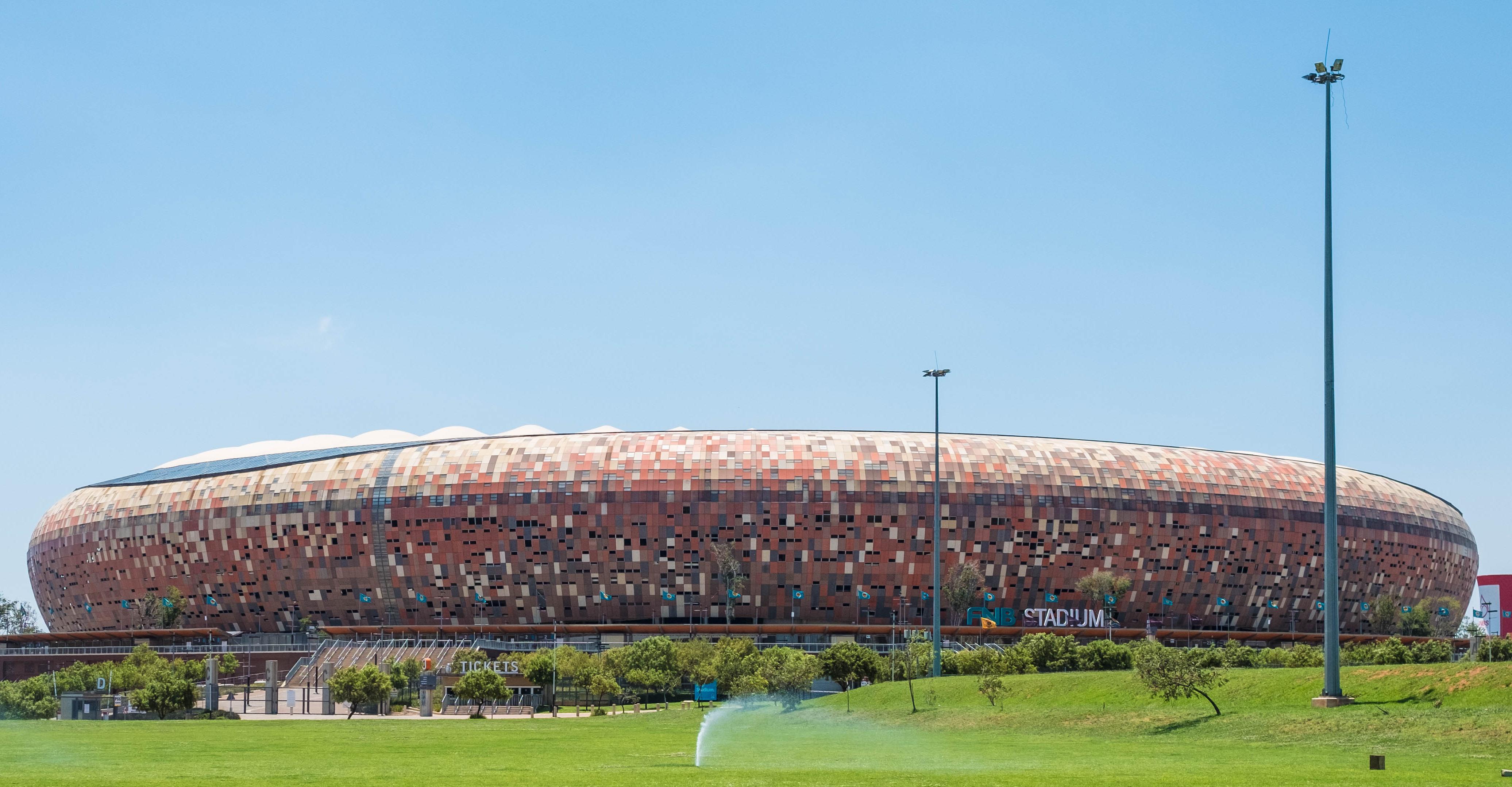
FNB Stadium, also known as Soccer City, is a testament to South Africa’s rich cultural heritage and its commitment to world-class sports infrastructure. With a capacity of 94,736, it is one of the largest stadiums in Africa and a symbol of unity and pride for the continent. The stadium’s design is inspired by a traditional calabash, or African cooking pot, with an orange and black mosaic facade that glows brilliantly under the lights. Its curved roof and open-air design enhance airflow and acoustics, creating an unforgettable atmosphere during events. The venue has hosted historic moments, including the 2010 FIFA World Cup final and Nelson Mandela’s memorial service, adding to its cultural significance. For the University of Johannesburg, FNB Stadium serves as more than just a sports venue. It provides students with opportunities to engage in athletics, cultural events, and leadership programs, fostering a sense of community and empowerment. The stadium’s integration with public transportation and its commitment to sustainability reflect its forward-thinking approach, making it a jewel of African collegiate sports.
12. Faurot Field at Memorial Stadium – University of Missouri (USA)
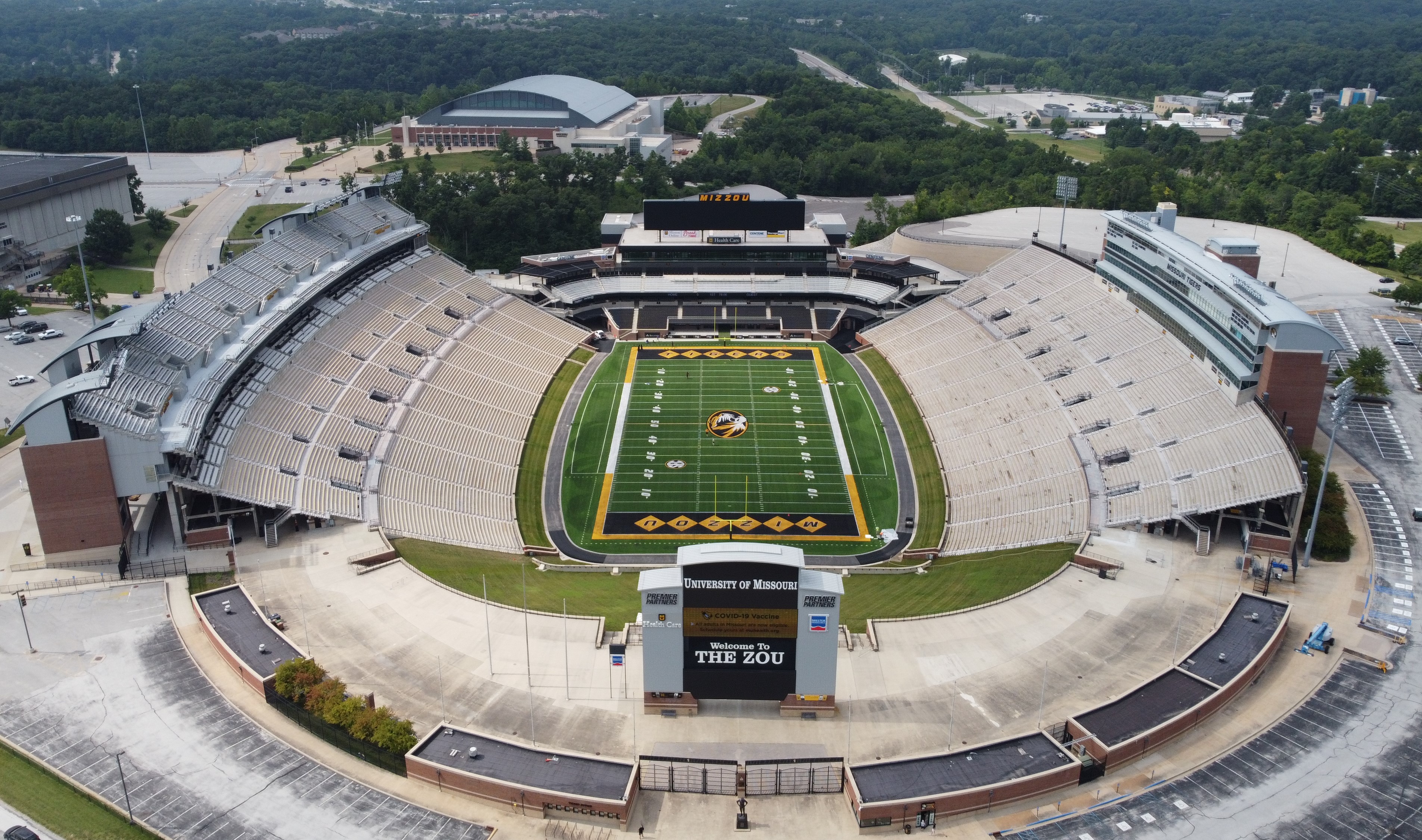
Faurot Field at Memorial Stadium in Columbia, Missouri, is a cornerstone of the University of Missouri’s athletic and cultural identity. Known for its picturesque setting and rich history, the stadium has been the home of the Missouri Tigers football team since its opening in 1926. Nestled against the backdrop of rolling hills, Faurot Field combines the charm of a traditional collegiate stadium with modern amenities that enhance the game-day experience. One of the stadium’s most iconic features is the "Rock M," a giant "M" formed by whitewashed rocks on the north end of the field. This beloved symbol, created by students in 1927, represents the university’s pride and spirit. The tradition of maintaining and painting the "Rock M" has become a rite of passage for students and fans, further solidifying its place in Missouri folklore. With a seating capacity of over 61,000, Faurot Field delivers an electrifying atmosphere on game days. The stadium’s design ensures excellent sightlines, while its open bowl structure amplifies crowd noise, creating an intimidating environment for visiting teams. Recent renovations have added modern features, such as a high-definition video board, premium seating options, and upgraded concessions, ensuring fans enjoy both comfort and excitement.
13. Williams-Brice Stadium – University of South Carolina (USA)
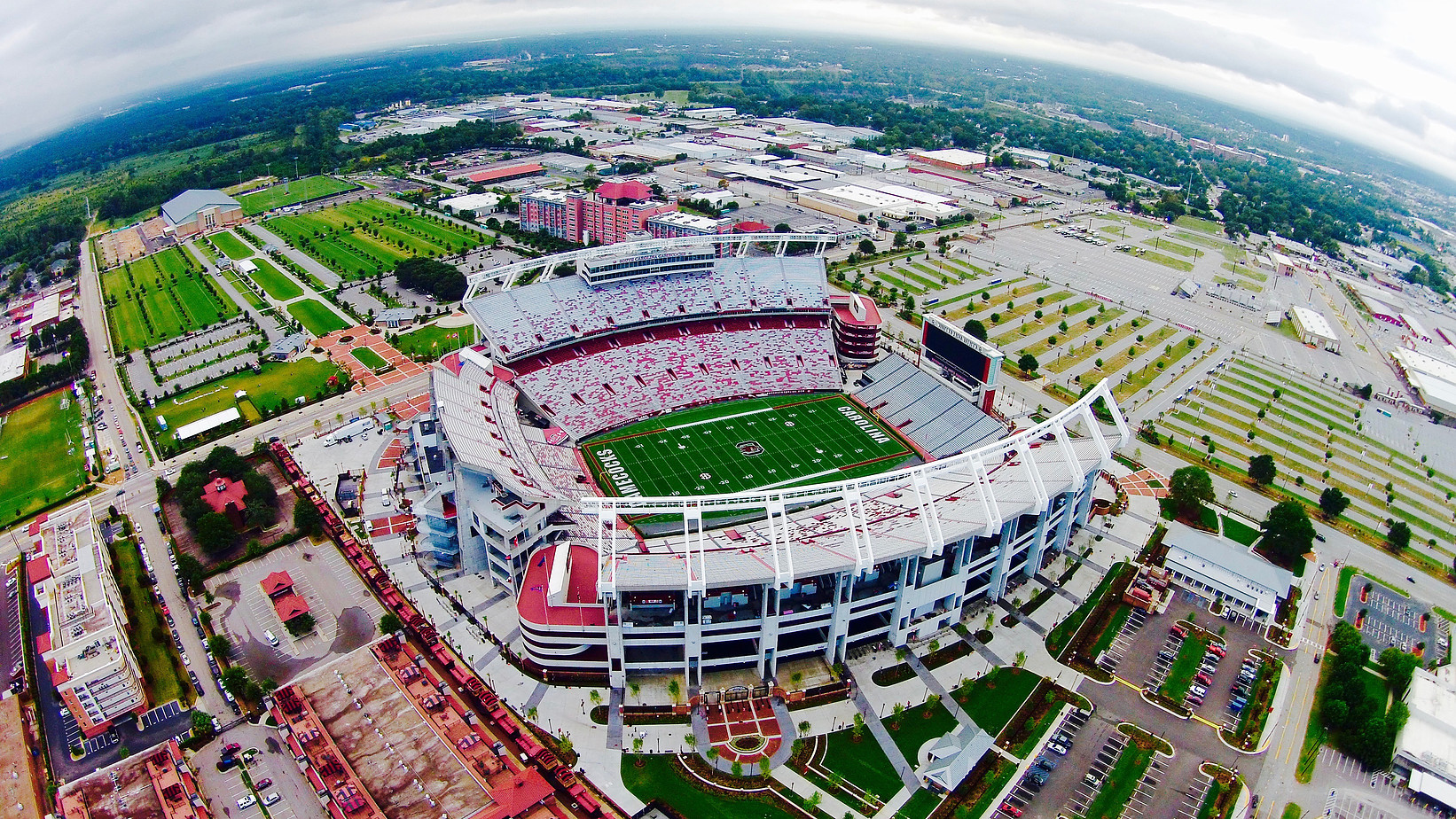
Williams-Brice Stadium, located in Columbia, South Carolina, stands out as a unique blend of historic charm and modern flair. Originally constructed in 1934, it has undergone numerous renovations to become one of the most striking college football stadiums in the United States. With a seating capacity of over 77,000, it is the heart of Gamecock Nation, hosting electrifying football games and countless memories for students, alumni, and fans. The stadium’s unique horseshoe design offers panoramic views of the surrounding city, including Columbia’s skyline, creating a backdrop that enhances the game-day experience. Its state-of-the-art LED lighting and video boards elevate the excitement, creating immersive visual spectacles during night games. The stadium also features a dedicated “Cockaboose Railroad,” a line of luxurious tailgating train cars, adding a quirky and distinctive element to its charm. More than just a sports venue, Williams-Brice Stadium has a strong community focus. It frequently hosts concerts, charity events, and cultural celebrations, fostering connections among students, alumni, and residents. The stadium is a symbol of South Carolina pride, embodying the resilience, passion, and spirit of the Gamecock community.
14. Estadio Universitario – Monterrey Institute of Technology (Mexico)
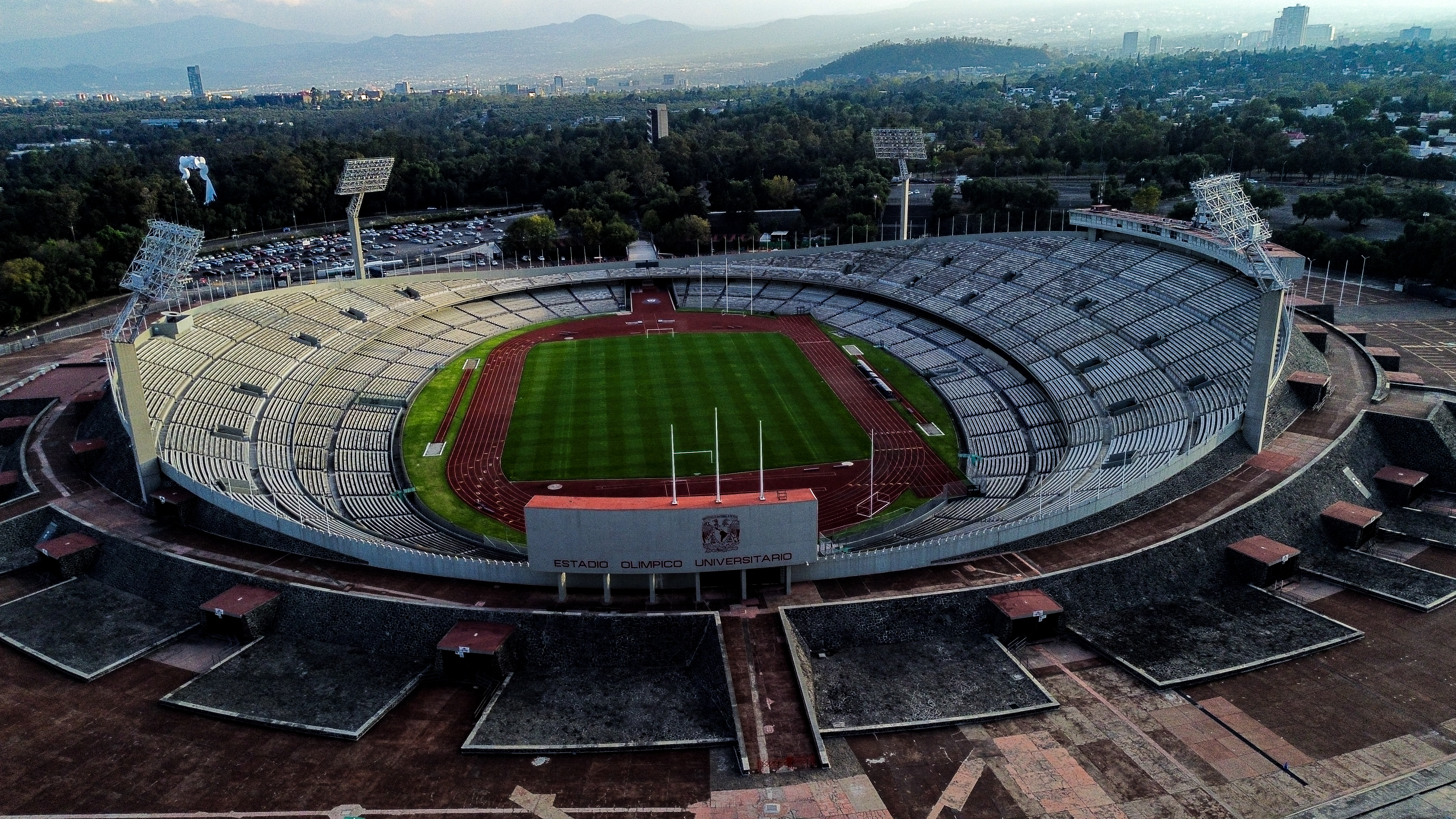
Nicknamed “El Volcán” for its resemblance to a volcano, Estadio Universitario is a testament to Monterrey’s love for sports and bold architectural design. Opened in 1967, this stadium has a capacity of 42,000 and serves as both a collegiate and professional venue, hosting the Tigres UANL soccer team alongside university events. The stadium’s steep terraces and striking blue seating create an intense, intimate atmosphere for fans. Its design is deeply connected to the region’s geography, with the volcanic shape paying homage to the nearby Cerro de la Silla mountains. The layout maximizes crowd noise, earning it a reputation as one of the most intimidating venues in Latin America. Beyond sports, Estadio Universitario serves as a cultural hub for Monterrey. It hosts student festivals, concerts, and community events, showcasing its versatility. For the Monterrey Institute of Technology, the stadium represents academic and athletic excellence, fostering pride among students and alumni while solidifying its place as a beacon of Mexican collegiate sports.
15. Aloha Stadium – University of Hawaii (US
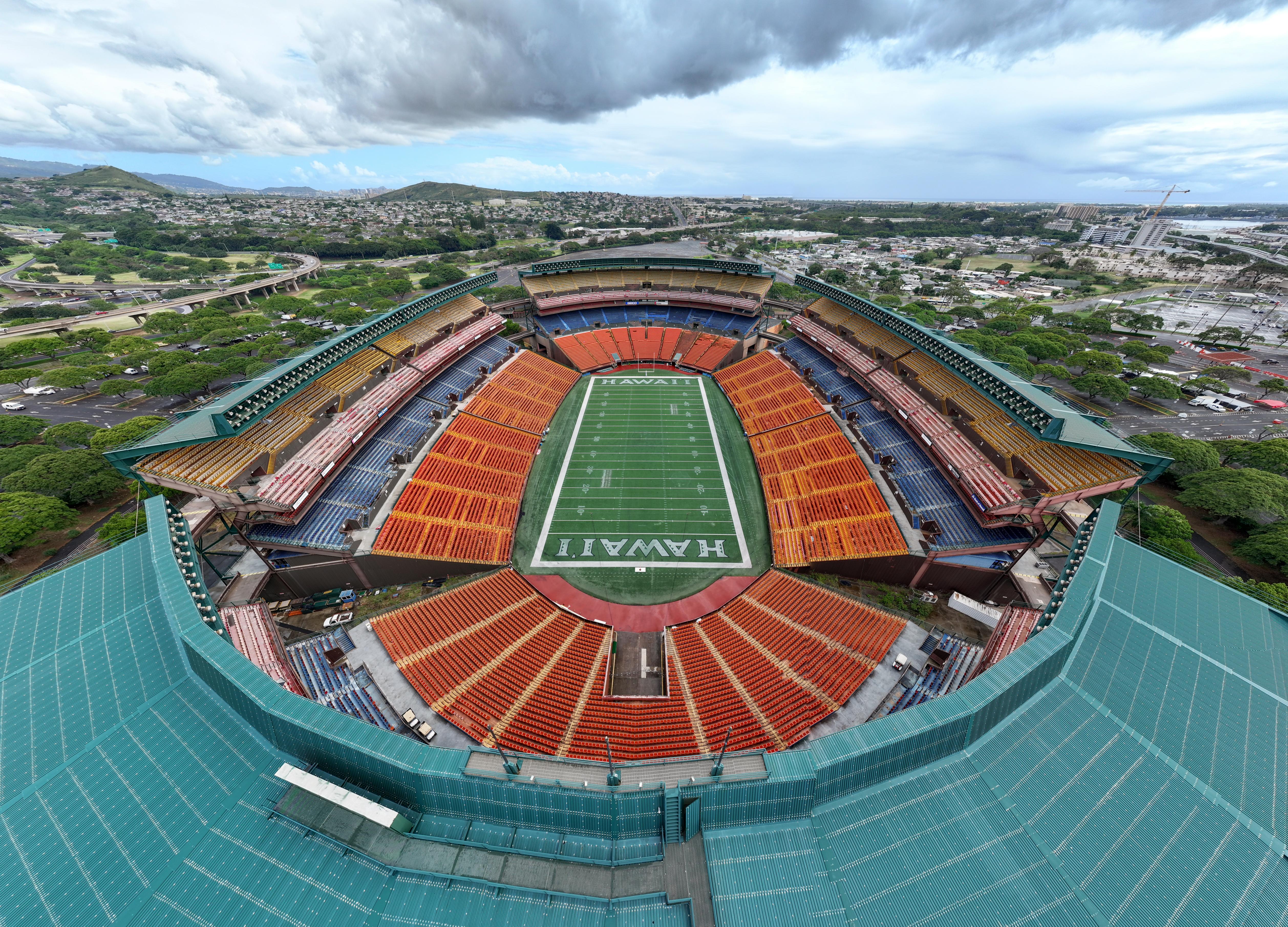
Aloha Stadium, located in the vibrant city of Honolulu, Hawaii, stands as a shining example of how sports and culture can seamlessly intertwine. Known for its iconic architecture and breathtaking backdrop, the stadium served as the home field for the University of Hawaii Rainbow Warriors football team and was the site of the annual Aloha Bowl. Although recently retired as a primary sports venue, Aloha Stadium's legacy endures as a cultural landmark in the Hawaiian Islands. Built in 1975, Aloha Stadium was celebrated for its unique open-air design and multi-use versatility. Its movable stands allowed for different configurations, accommodating football, soccer, baseball, and concerts, making it a multifunctional hub for the university and the local community. The tropical environment played a pivotal role in shaping the stadium's aesthetic, with the facility designed to allow ocean breezes to flow through, creating a cool and inviting atmosphere for fans. Halftime shows at Aloha Stadium were an immersive cultural experience, often featuring traditional Hawaiian hula performances, ukulele music, and fire knife dancing. These displays highlighted the rich heritage of the islands, offering a unique twist on conventional halftime entertainment. The stadium became synonymous with the spirit of aloha, bringing together residents and visitors to celebrate not only sports but also the culture and traditions of Hawaii.
16. The Birds’ Nest – Tsinghua University (China)
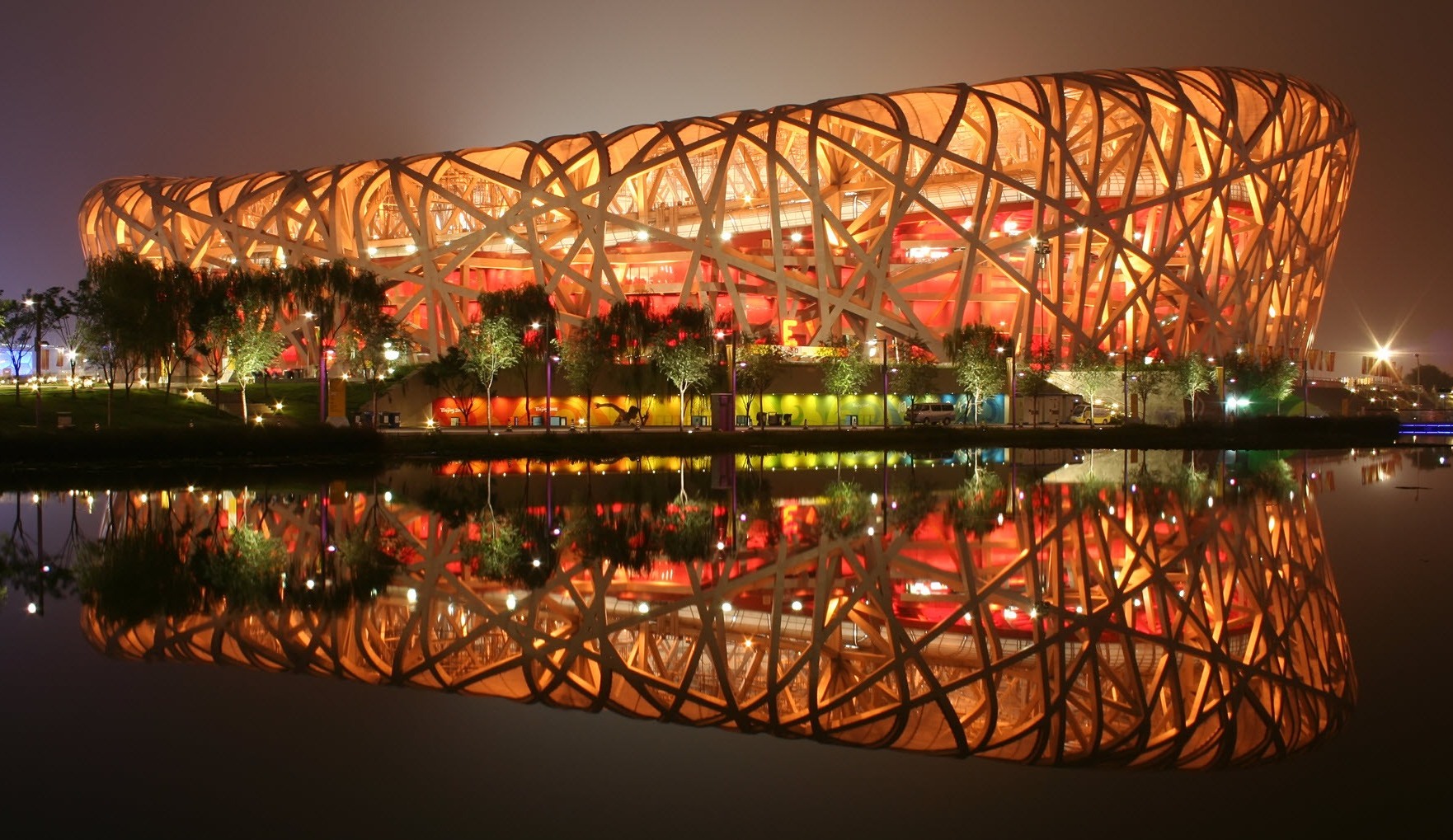
Inspired by Beijing’s Olympic Stadium, Tsinghua University’s Birds’ Nest is a marvel of modern design and sustainability. With its intricate steel framework and eco-friendly features, the stadium embodies China’s commitment to innovation and environmental stewardship. The Birds’ Nest can accommodate 40,000 spectators and is used for a variety of events, including athletics, concerts, and academic ceremonies. Its advanced engineering allows for energy-efficient lighting, natural ventilation, and the integration of solar panels, making it one of the greenest stadiums in Asia. Cultural significance is also woven into its design. The stadium’s shape, reminiscent of a bird’s nest, symbolizes protection and nurturing, reflecting Tsinghua University’s mission to foster the development of its students. The Birds’ Nest serves as a hub for academic and athletic excellence, bridging the gap between tradition and modernity.
17. Cape Town Stadium – University of Cape Town (South Africa)
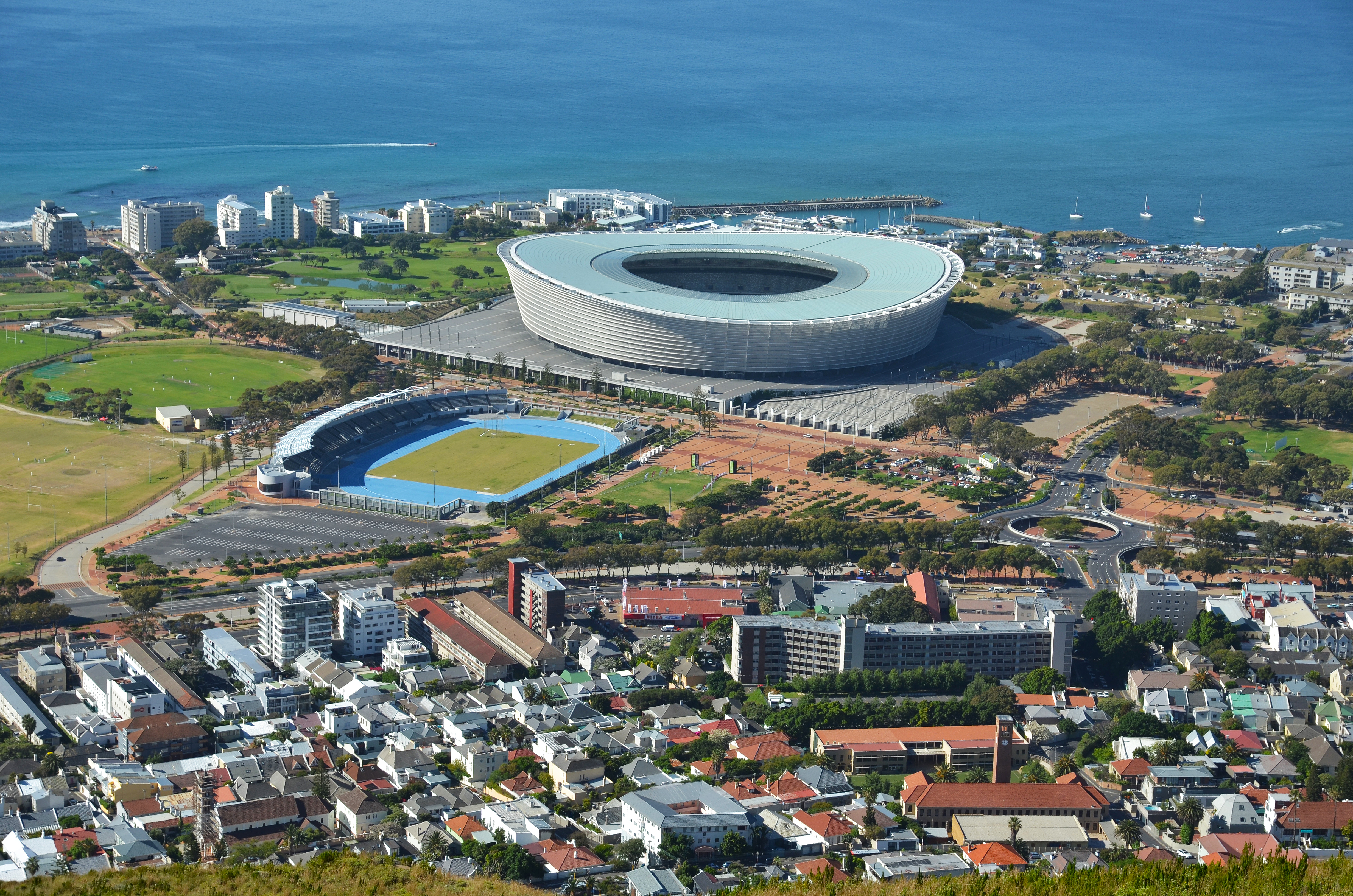
Set against the breathtaking backdrop of Table Mountain, Cape Town Stadium is a masterpiece of architectural design and natural integration. Built for the 2010 FIFA World Cup, it now serves as a venue for the University of Cape Town’s sporting events, as well as professional matches and cultural gatherings. The stadium’s 55,000-seat capacity and flowing, wave-like roof make it one of the most visually striking venues in the world. Its open design allows for natural light to illuminate the interior, while the acoustics amplify crowd noise, creating an electric atmosphere during events. Sustainability is a key focus, with rainwater harvesting systems and energy-efficient technologies reducing the stadium’s environmental impact. Cape Town Stadium plays a vital role in the university and local community. It hosts charity events, festivals, and academic ceremonies, fostering a sense of unity among students, residents, and visitors. As a symbol of South African progress and pride, the stadium stands as a testament to the power of design to inspire and connect.
18. Sanford Stadium – University of Georgia (USA)

Sanford Stadium in Athens, Georgia, is one of the most iconic venues in college football, known for its Southern charm and historic hedges that surround the field. Opened in 1929, the stadium has grown to a capacity of over 92,000, becoming a symbol of Bulldog pride and tradition. The stadium’s architecture blends classic and modern elements, with brick facades and wrought-iron gates that exude Southern elegance. Inside, the layout ensures excellent sightlines, while the addition of luxury boxes and high-definition video boards enhances the fan experience. The lush hedges encircling the field are a unique feature, symbolizing the unity and spirit of the Georgia Bulldogs. Sanford Stadium is more than a sports venue—it’s a cultural landmark. It hosts pep rallies, concerts, and academic events, bringing together the university and local community. Its rich history, combined with its modern amenities, makes it a cherished part of the University of Georgia’s identity.
19. Maracanãzinho – Federal University of Rio de Janeiro (Brazil)
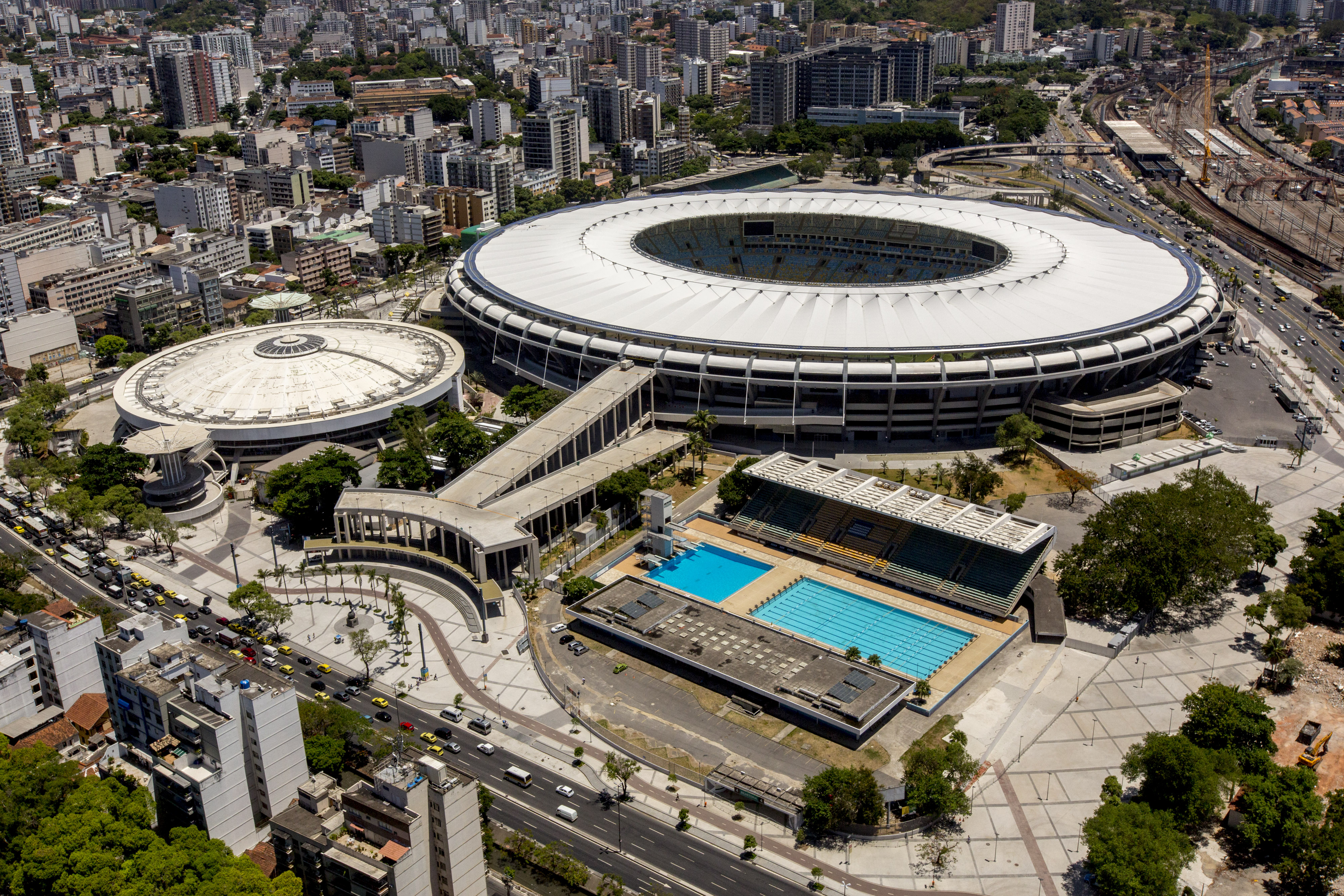
The Maracanãzinho, or "Little Maracanã," is an indoor stadium located next to the legendary Maracanã in Rio de Janeiro. Although it’s smaller in scale, its cultural and architectural significance rivals that of its famous neighbor. With a seating capacity of 12,000, this venue is primarily used for volleyball and other indoor sports, serving as a hub for both collegiate and professional athletics. What sets Maracanãzinho apart is its circular design and sweeping roof, which give it the feel of a modern coliseum. The structure’s interior features tiered seating that ensures unobstructed views from every angle, while the polished wood court reflects Brazil’s commitment to high-quality sports infrastructure. Its vibrant yellow and green color scheme pays homage to the nation’s flag, creating an environment that radiates energy and national pride. For the Federal University of Rio de Janeiro, Maracanãzinho is more than a sports arena—it’s a space for fostering community and athletic development. It hosts student tournaments, cultural festivals, and even international competitions like the Volleyball World Cup. The stadium’s proximity to the iconic Maracanã further cements its place as a symbol of Brazil’s passion for sports and culture.
20. Reser Stadium – Oregon State University (USA)
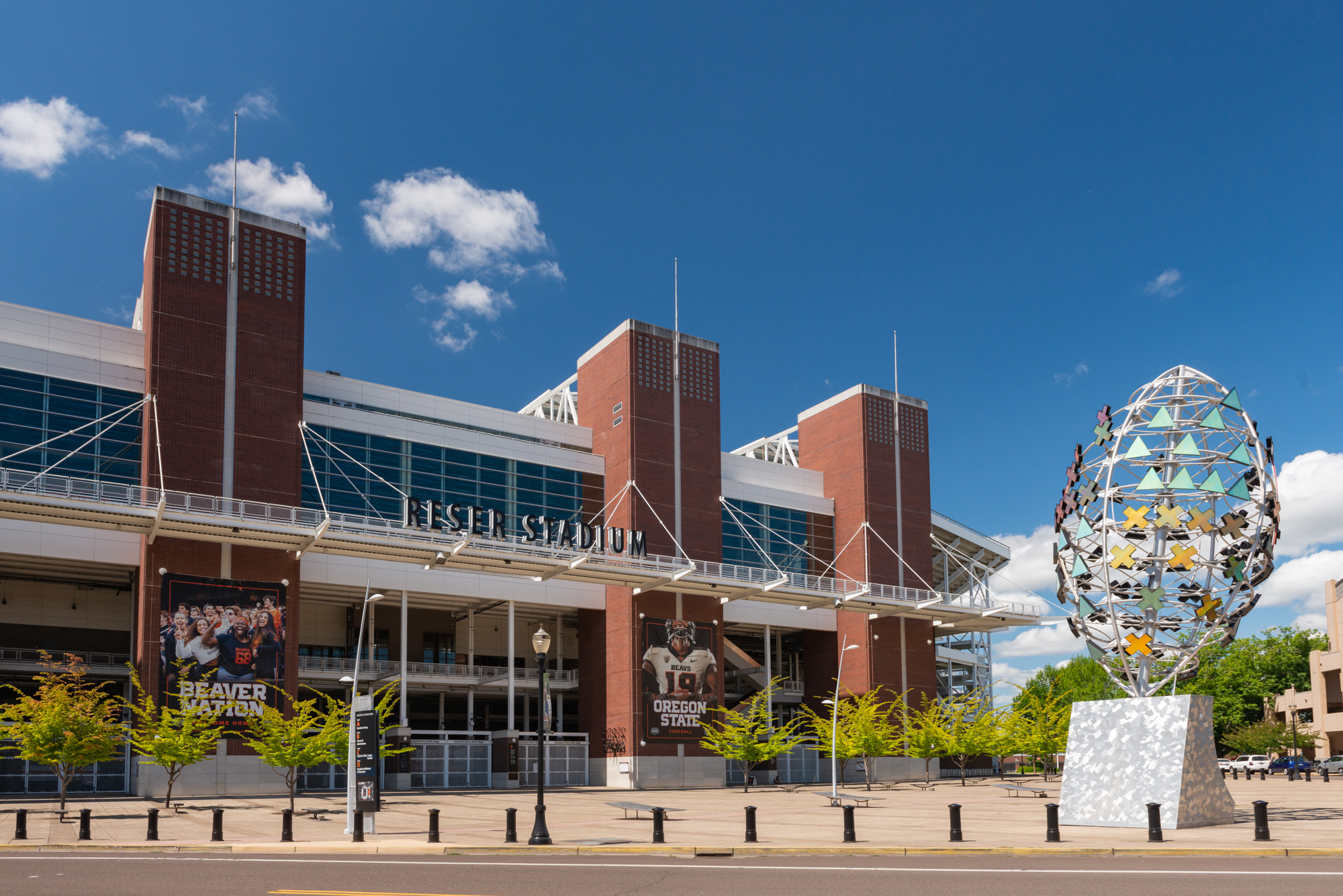
Reser Stadium in Corvallis, Oregon, is a testament to the passion and pride of Oregon State University and its Beaver Nation. Originally opened in 1953 as Parker Stadium, it was renamed Reser Stadium in 1999 following a major contribution from alumnus Al Reser. Over the years, this stadium has grown from modest beginnings to become one of the premier venues in the Pacific Northwest, blending tradition with modern advancements. With a current capacity of over 26,000, Reser Stadium is in the midst of an ambitious renovation project aimed at transforming it into a state-of-the-art facility. Once complete, the stadium will feature improved seating, enhanced fan amenities, and new technological upgrades, solidifying its reputation as a premier destination for college football. Despite its upgrades, Reser Stadium retains a sense of intimacy, with fans close to the action, creating an electric atmosphere during Oregon State games. The stadium’s unique location in the heart of Oregon’s Willamette Valley offers stunning views of the surrounding natural beauty, further enhancing the game-day experience. On fall Saturdays, the stadium becomes a sea of orange and black, with Beaver fans bringing unmatched energy and enthusiasm.
21. Nou Mestalla – University of Valencia (Spain)
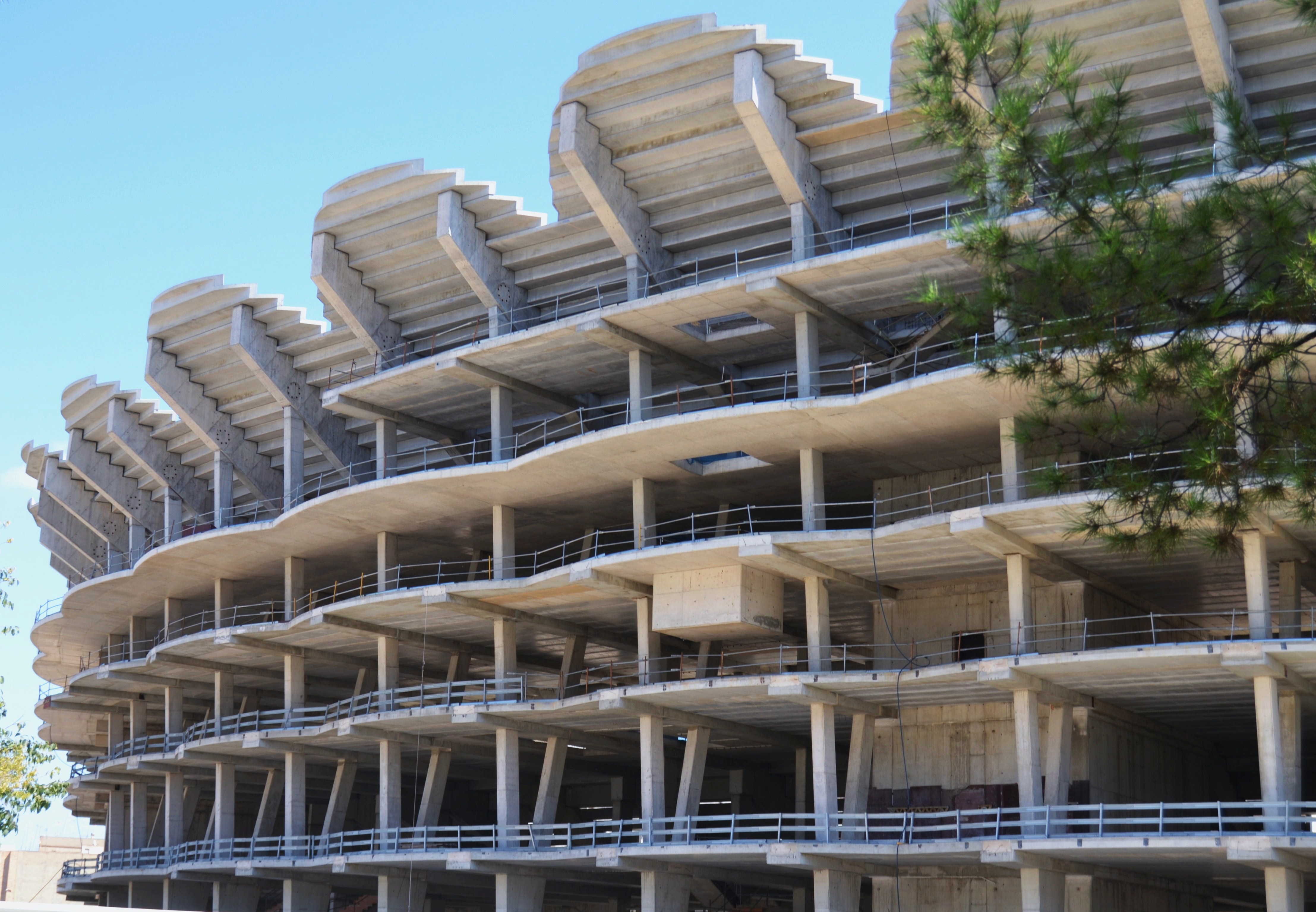
Though still under construction, Nou Mestalla is already being hailed as a future architectural masterpiece. Designed to replace Valencia’s existing Mestalla Stadium, this venue will also serve as a home for university-level sports, reflecting the region’s passion for soccer and academic excellence. With a planned capacity of 55,000, Nou Mestalla promises to be one of the most modern and visually striking stadiums in Europe. The design features a layered terrace structure and a metallic facade that shimmers under the sunlight. Its eco-friendly elements, including rainwater harvesting systems and solar panels, align with Valencia’s commitment to sustainability. The interior boasts spacious concourses, advanced sound systems, and LED displays, ensuring a world-class experience for fans and athletes alike. For the University of Valencia, Nou Mestalla represents more than just a sports venue—it’s a symbol of the city’s rich cultural heritage and innovative spirit. Once completed, it will host university tournaments, cultural events, and international competitions, solidifying its status as a landmark of modern Spain.
22. Sun Devil Stadium – Arizona State University (USA)
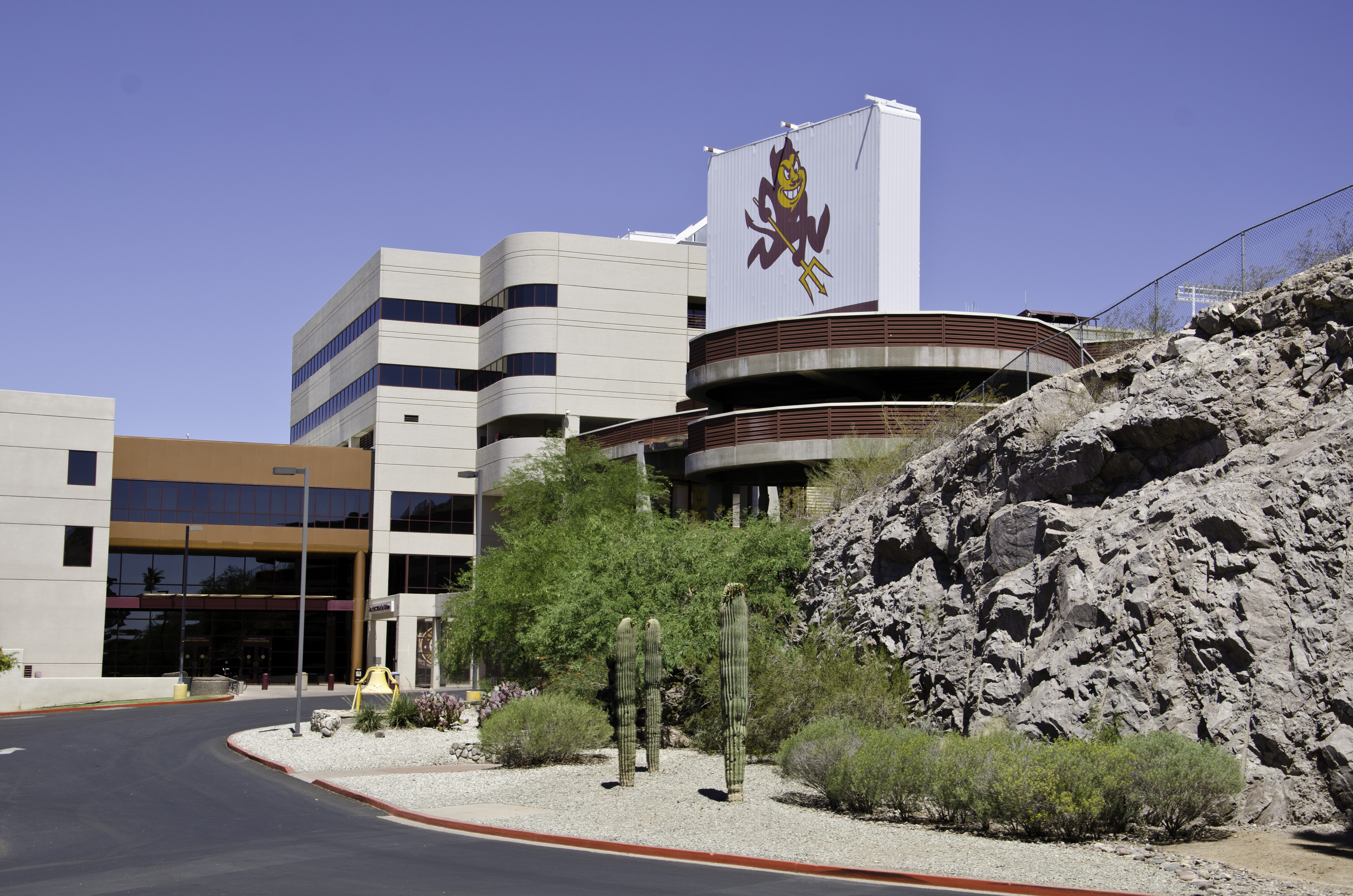
Nestled in the rocky desert landscape of Tempe, Arizona, Sun Devil Stadium is a testament to the harmony between architecture and nature. Built into the surrounding buttes, this stadium offers stunning views of the desert while providing an intimate and engaging atmosphere for fans. With a seating capacity of 53,599, it serves as the home of the Arizona State Sun Devils football team. The stadium’s design incorporates natural stone and earth tones, blending seamlessly with its environment. Recent renovations have introduced modern amenities, including shaded seating areas, upgraded video boards, and enhanced Wi-Fi connectivity, making it a cutting-edge venue. Despite its upgrades, the stadium retains its unique charm, with the desert landscape serving as a dramatic backdrop for games and events. Sun Devil Stadium is more than just a football arena—it’s a gathering place for the ASU community. It hosts concerts, cultural festivals, and academic ceremonies, fostering a sense of unity and pride. Its commitment to sustainability, including water conservation and solar energy initiatives, reflects Arizona State University’s dedication to environmental stewardship.
23. Panathenaic Stadium – National and Kapodistrian University of Athens (Greece)
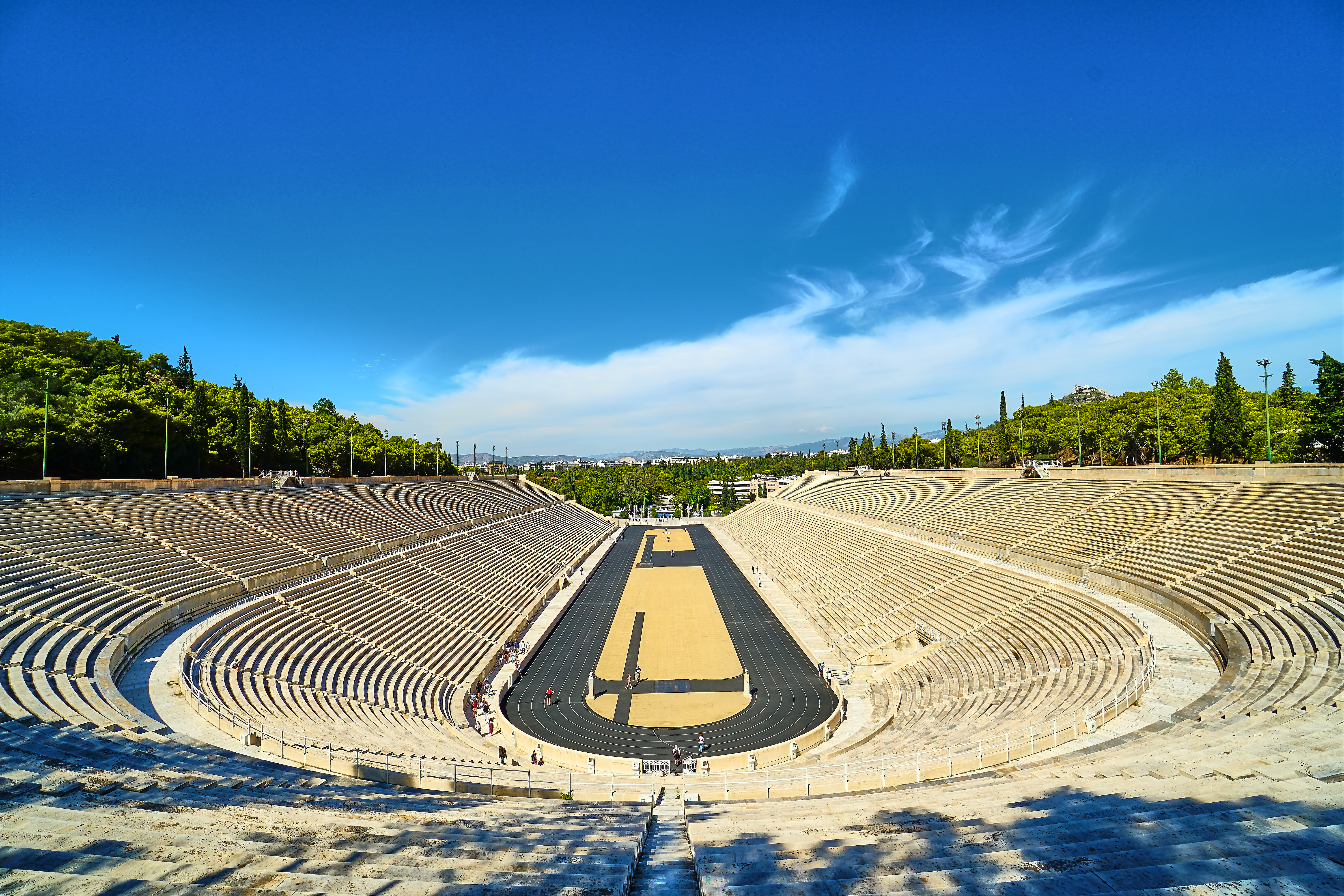
The Panathenaic Stadium in Athens, Greece, stands as a timeless monument to the origins of athletic competition and academic excellence. Known as the "Kallimarmaro" (meaning "beautifully marbled"), this historic stadium, constructed entirely of white Pentelic marble, has a capacity of 50,000 and is the only stadium in the world made entirely of marble. Its history dates back to ancient Greece, where it hosted the Panathenaic Games in honor of the goddess Athena, making it one of the most storied venues on this list. Revitalized for the first modern Olympic Games in 1896, the Panathenaic Stadium continues to serve as a hub for academic and athletic events tied to the National and Kapodistrian University of Athens. Its unique horseshoe shape and breathtaking views of the Acropolis and Lycabettus Hill create an awe-inspiring setting for any event. The stadium is not just a sporting venue but a cultural and academic landmark. Students of the university often use the grounds for celebrations, ceremonies, and even study sessions, taking inspiration from the timeless architecture and its historical significance. The site also hosts traditional Greek performances, international marathons, and concerts, blending the ancient and modern worlds.
24. Ben Hill Griffin Stadium – University of Florida (USA)
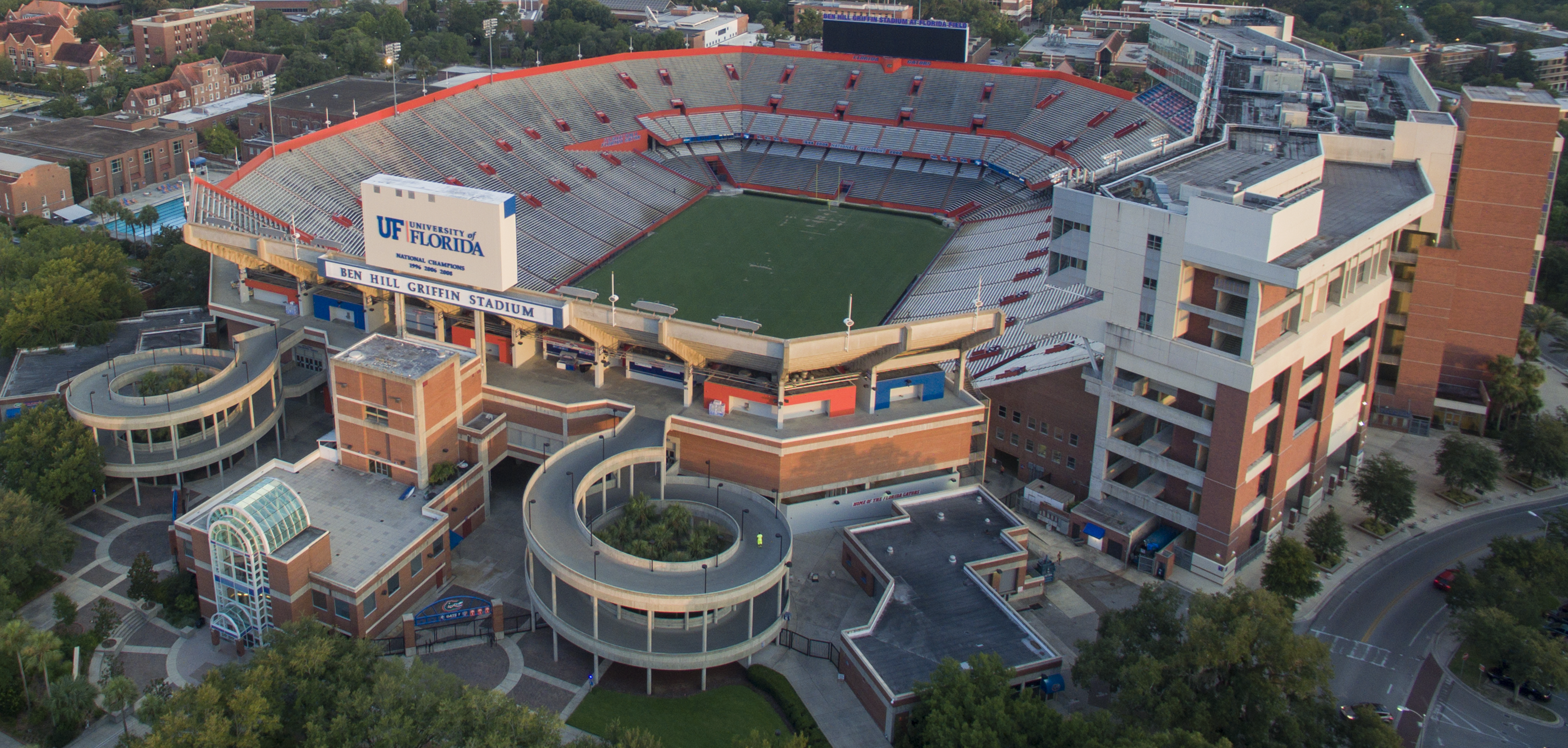
Known as "The Swamp," Ben Hill Griffin Stadium is one of the most intimidating venues in college football. Located in Gainesville, Florida, this iconic stadium has a seating capacity of over 88,000 and is home to the Florida Gators. Its sunken design creates a cauldron-like atmosphere, amplifying crowd noise and making it a formidable place for visiting teams. The stadium’s architecture blends tradition and modernity, with its brick facades and wrought-iron details evoking classic Southern charm. Recent upgrades have introduced luxury suites, enhanced concessions, and high-definition video boards, ensuring a top-tier experience for fans. The stadium’s vibrant orange and blue color scheme reflects the school’s identity, creating a visually stunning backdrop for games. Beyond football, The Swamp serves as a hub for the University of Florida community. It hosts pep rallies, concerts, and academic events, fostering a sense of pride and unity among students, alumni, and fans. For Gator Nation, Ben Hill Griffin Stadium is more than a sports venue—it’s a sacred space that embodies the passion and tradition of Florida football.
25. The Blue Bowl – Boise State University (USA)

The Blue Bowl, formally known as Albertsons Stadium, is one of the most instantly recognizable college stadiums in the world. Located in Boise, Idaho, this 36,387-seat venue is home to the Boise State Broncos football team. Its claim to fame lies in its striking blue turf, often referred to as the "Smurf Turf," which stands out dramatically against the surrounding landscape. The stadium’s design is tailored to maximize the game-day atmosphere, with steep seating that brings fans closer to the field and amplifies crowd noise. The vibrant blue field, introduced in 1986, has become a symbol of Boise State’s innovation and boldness, representing the team’s unique identity in collegiate athletics. While initially controversial, the field has since become a source of pride and a tourist attraction, drawing visitors from across the country. Beyond its iconic turf, Albertsons Stadium boasts modern amenities, including premium seating areas, a high-definition video board, and updated concessions. It also plays host to the Famous Idaho Potato Bowl, a beloved college football postseason tradition. For Boise State, The Blue Bowl isn’t just a sports venue—it’s a celebration of creativity, determination, and Bronco pride.
26. The Arena at TU Delft (Netherlands)
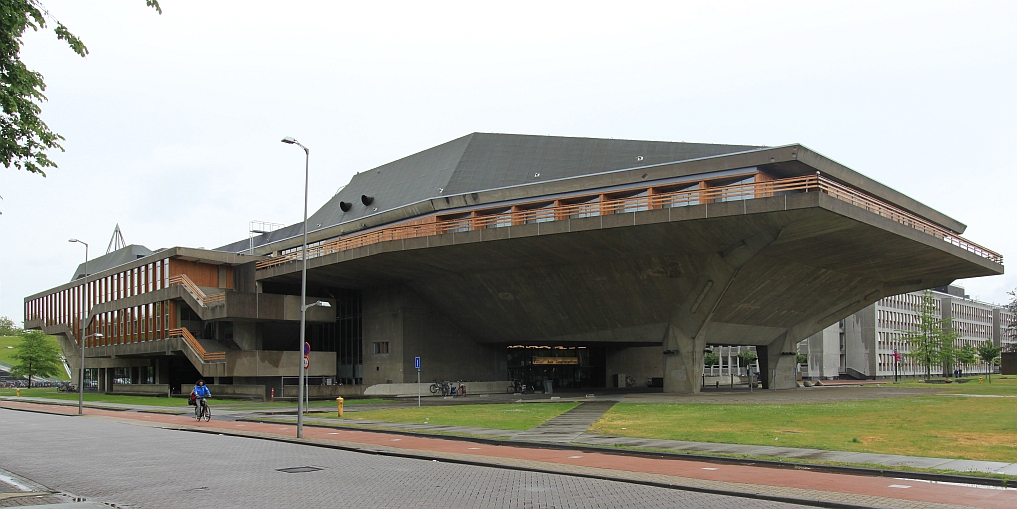
TU Delft’s Arena is a masterclass in sustainable design and innovative architecture. Located in the Netherlands, this venue represents the university’s commitment to eco-friendly practices and cutting-edge engineering. Its sleek, modern design incorporates solar-powered roofs and modular seating, allowing the stadium to adapt to various events, from soccer matches to academic conferences. The stadium’s most striking feature is its dynamic facade, composed of rotating solar panels that adjust to capture maximum sunlight throughout the day. This technology not only powers the facility but also serves as a teaching tool for engineering and sustainability students. Inside, the seating is designed to be lightweight and movable, accommodating both large-scale events and intimate gatherings. The Arena at TU Delft is more than a sports venue—it’s a living laboratory. Students and researchers frequently collaborate on projects within the stadium, using it as a testbed for sustainable innovations. By blending academics, athletics, and environmental stewardship, this stadium serves as a shining example of the future of collegiate infrastructure.
27. Kinnick Stadium – University of Iowa (USA)
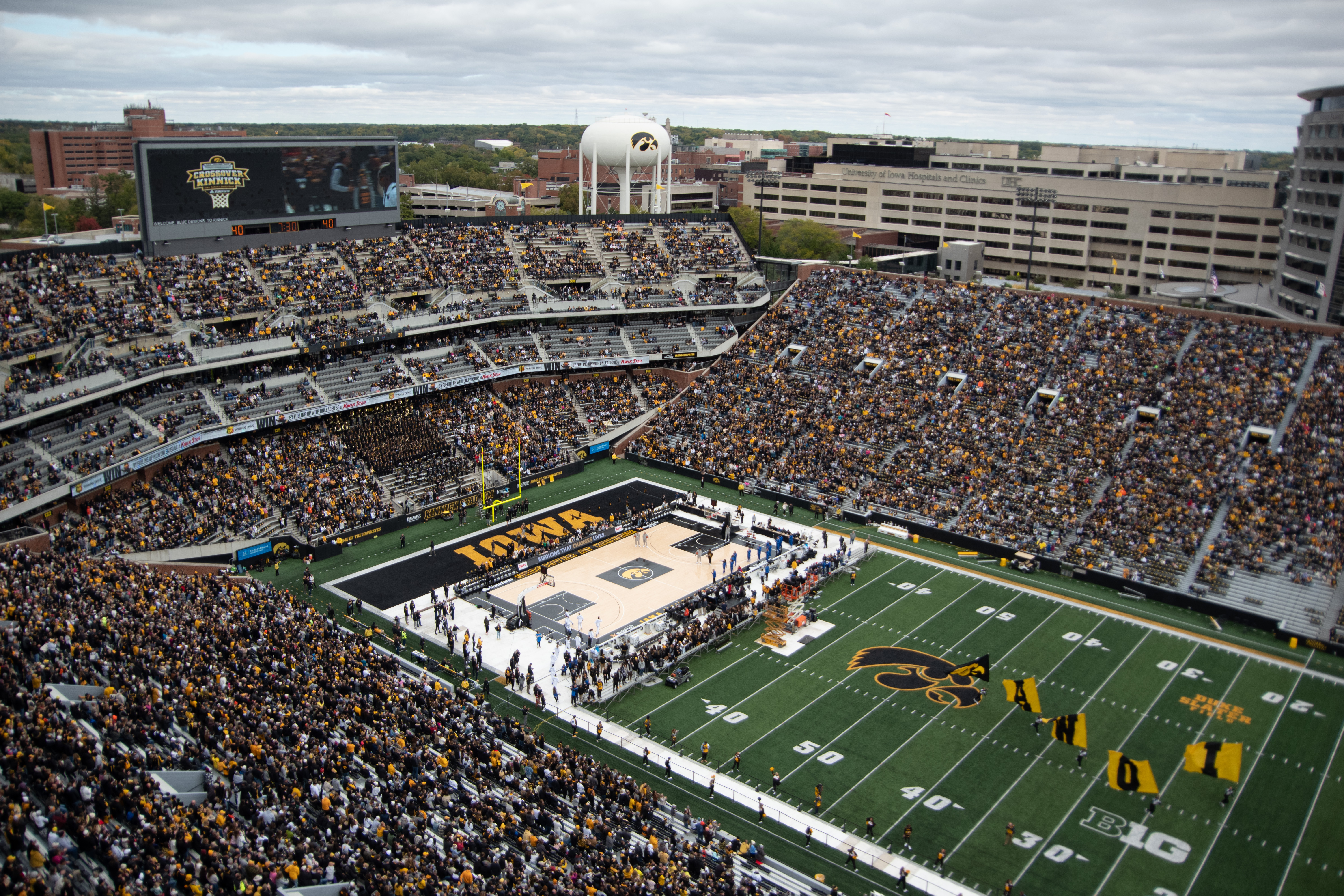
Kinnick Stadium in Iowa City is a unique blend of tradition, charm, and strategic psychological design. With a seating capacity of over 70,000, it’s home to the Iowa Hawkeyes football team and is renowned for its legendary atmosphere and quirky features. One of Kinnick’s most talked-about elements is its pink visitor locker room, a detail introduced by former coach Hayden Fry to unsettle opposing teams. While the tactic has sparked debate, it remains an iconic aspect of the stadium’s identity. The design of the stadium itself focuses on enhancing the fan experience, with an intimate bowl layout that keeps spectators close to the action. In recent years, Kinnick Stadium has embraced modernization while preserving its historic charm. Renovations have added premium seating, advanced sound systems, and upgraded facilities, ensuring it remains a premier destination for college football fans. Beyond sports, the stadium is deeply tied to the University of Iowa’s community, hosting events like the “Kinnick Wave,” a heartfelt tradition where fans wave to patients at the nearby children’s hospital. For Hawkeye Nation, Kinnick Stadium is a source of pride, unity, and countless unforgettable memories.
28. Kazan Arena – Kazan Federal University (Russia)
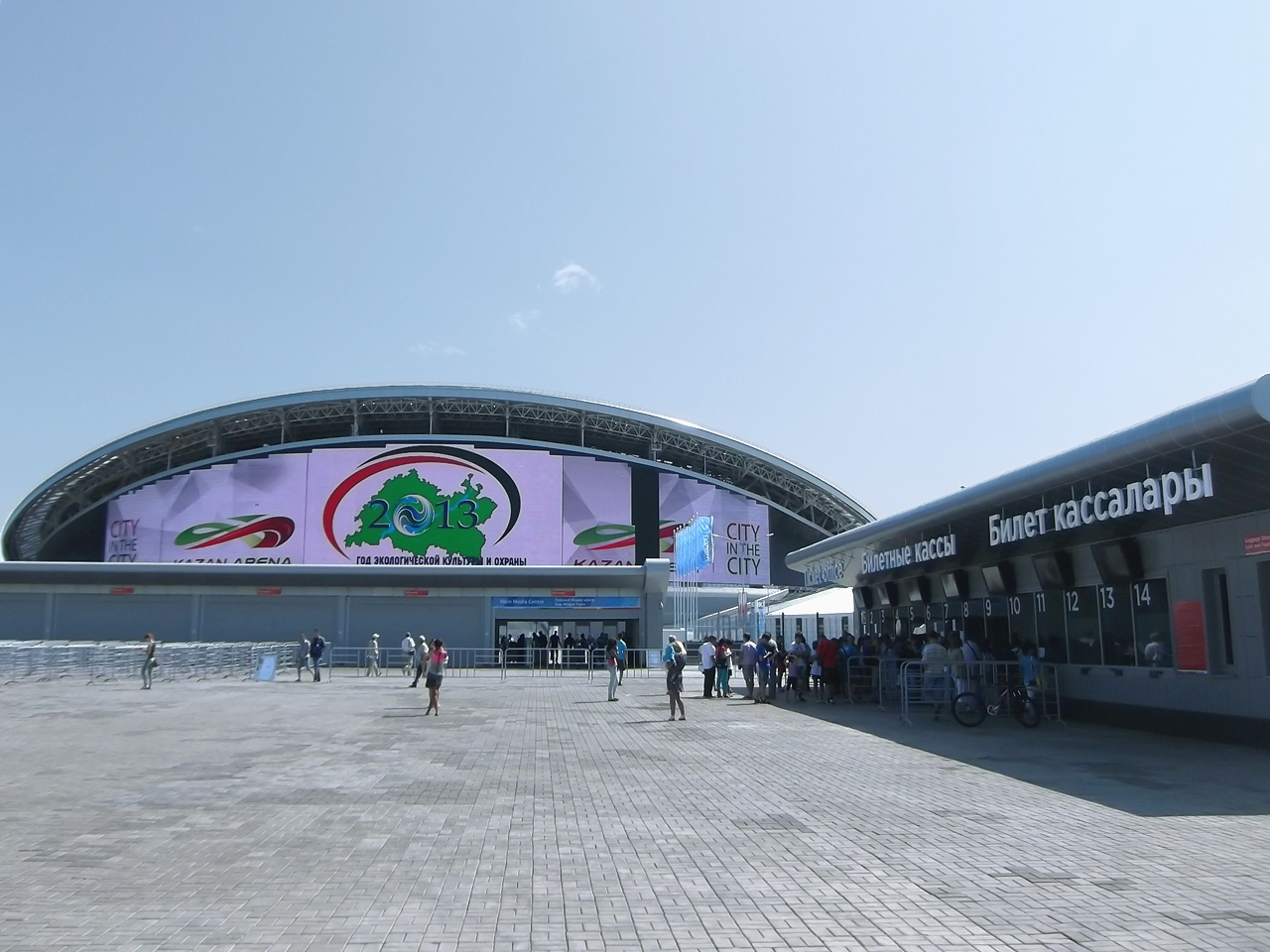
Kazan Arena is a stunning example of Russian innovation and design, located in the vibrant city of Kazan. With a seating capacity of 45,000, this stadium is not only a hub for professional sports but also a significant asset to Kazan Federal University. The stadium’s most striking feature is the massive LED screen integrated into its exterior facade, one of the largest of its kind in the world. This screen is used to display dynamic visuals, from live game updates to artistic light shows, making the venue a standout even from a distance. Inside, the stadium offers world-class facilities, including climate-controlled seating areas, advanced acoustics, and spacious concourses designed for optimal crowd flow. Kazan Arena regularly hosts events ranging from football matches to university convocations and cultural festivals. It played a prominent role in the 2018 FIFA World Cup, showcasing its ability to handle large-scale international events. For students and residents of Kazan, the stadium symbolizes progress, excellence, and a deep connection to their city’s rich heritage.
29. Jawaharlal Nehru Stadium – Jawaharlal Nehru University (India)
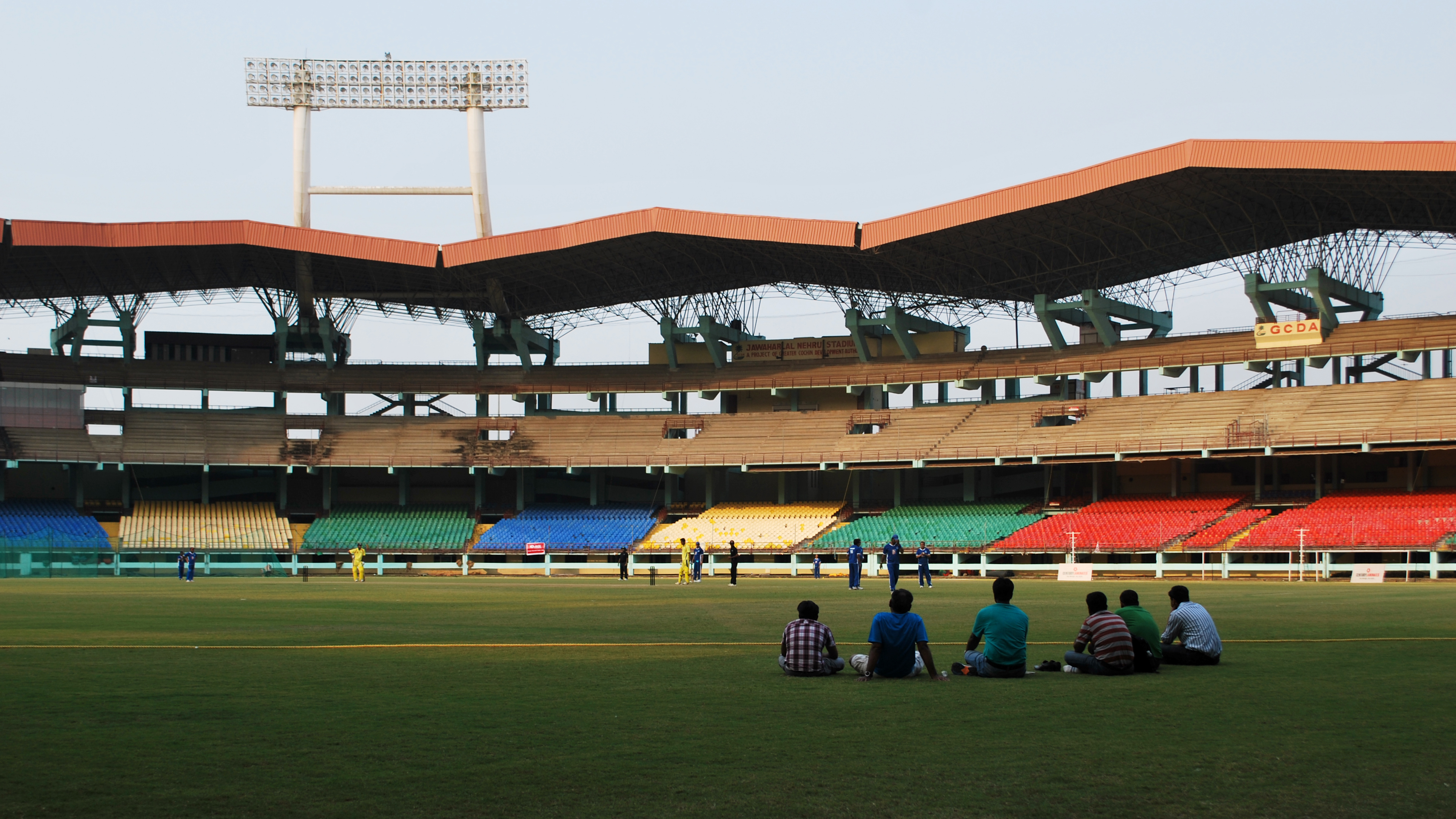
The Jawaharlal Nehru Stadium in New Delhi, India, is a shining example of how tradition and modernity can converge in a sports venue. Named after India's first Prime Minister, the stadium is not only a hub for athletics but also a symbol of the nation’s progress and cultural diversity. While primarily a professional and international venue, its close association with Jawaharlal Nehru University (JNU) allows it to serve as a platform for collegiate sports and academic celebrations, bridging the gap between academia and global sporting excellence. Built for the 1982 Asian Games and extensively renovated for the 2010 Commonwealth Games, the stadium boasts a seating capacity of 60,000 and cutting-edge facilities. Its elliptical structure, with a sweeping roof supported by tensile cables, is both visually striking and functional, providing shade while maintaining natural ventilation. The venue’s green initiatives, including energy-efficient lighting and water recycling systems, reflect India’s growing commitment to sustainability.
30. Puskás Aréna – Budapest University of Technology (Hungary)
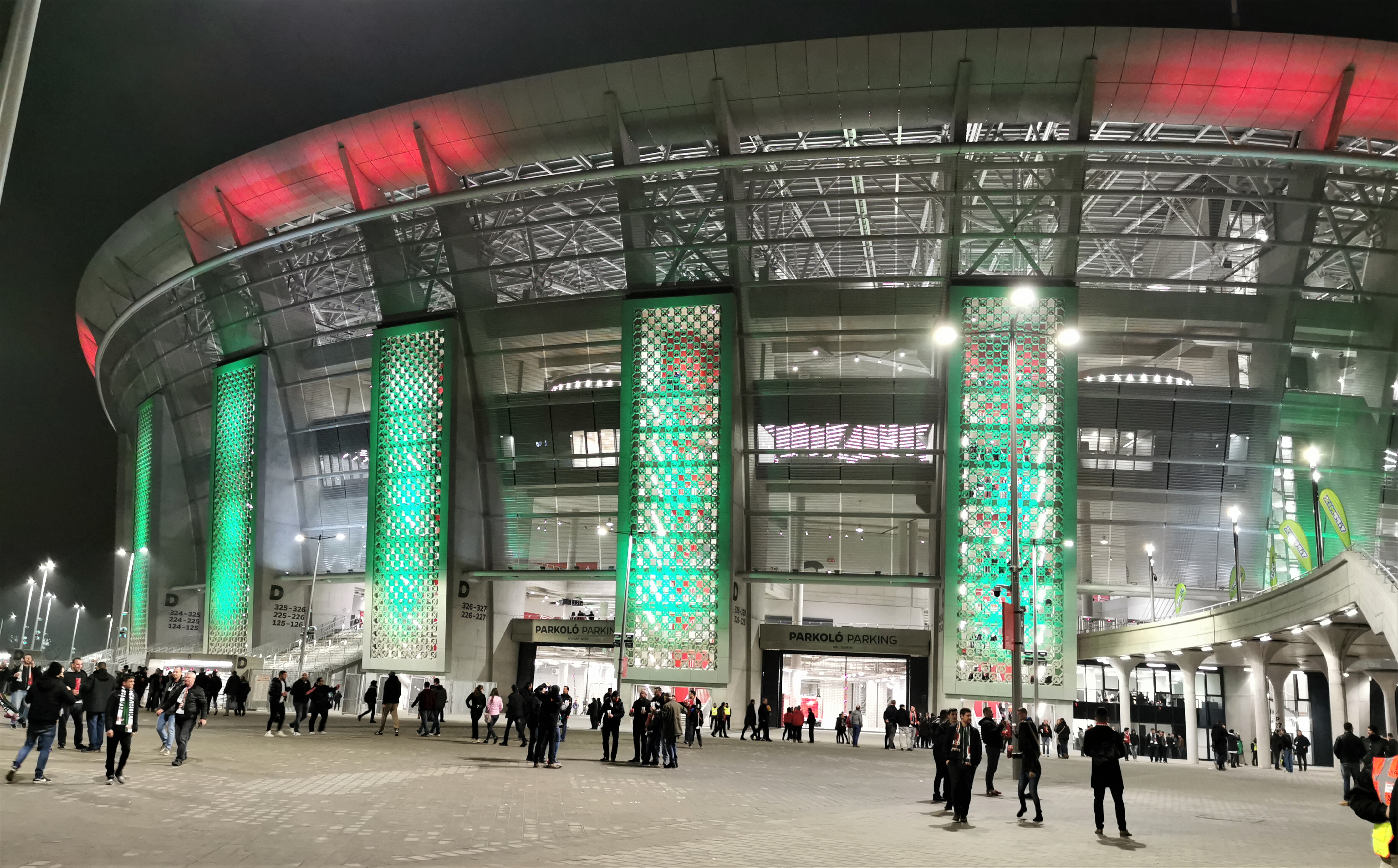
Puskás Aréna, named after legendary Hungarian footballer Ferenc Puskás, is a cutting-edge stadium that combines historical reverence with modern innovation. Located in Budapest, it serves as a venue for both professional sports and university-level competitions, highlighting Hungary’s deep love for athletics. The stadium’s angular architecture is a bold departure from traditional designs, featuring a facade of overlapping panels that create a dynamic interplay of light and shadow. Its interior boasts advanced amenities, including retractable seating, high-definition video boards, and premium hospitality suites. The venue’s capacity of 67,000 ensures that it can host major international events, such as UEFA matches and cultural festivals. For the Budapest University of Technology, Puskás Aréna represents an opportunity for students to engage with world-class facilities, whether through athletic programs or academic collaborations. The stadium’s role as a cultural landmark and a symbol of Hungarian pride makes it an indispensable part of Budapest’s vibrant landscape.
A Celebration of Global Architecture

These 30 college stadiums redefine what it means to create a sports venue, blending tradition, innovation, and cultural identity into structures that inspire awe. Each stadium tells a unique story, from its groundbreaking design to its role in fostering community spirit and academic pride. Whether steeped in history or pushing the boundaries of modern architecture, these stadiums showcase the limitless possibilities of human creativity. As centers of excellence and hubs of innovation, these arenas go beyond the playing field, serving as cultural landmarks and symbols of institutional identity. By celebrating these extraordinary venues, we honor the enduring impact of college stadiums on their communities and the world at large. Let these stadiums stand as a testament to the unifying power of sports, education, and design.



